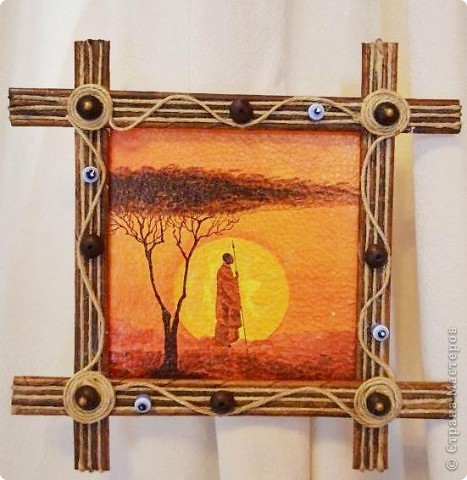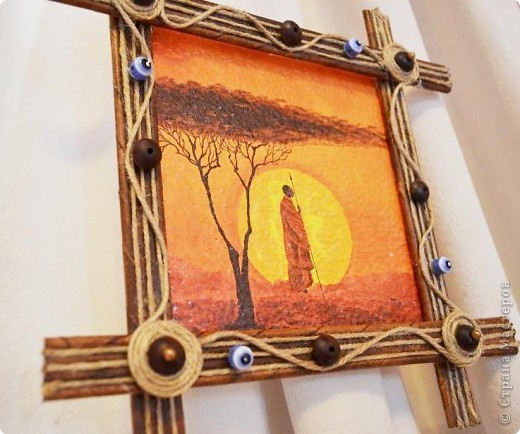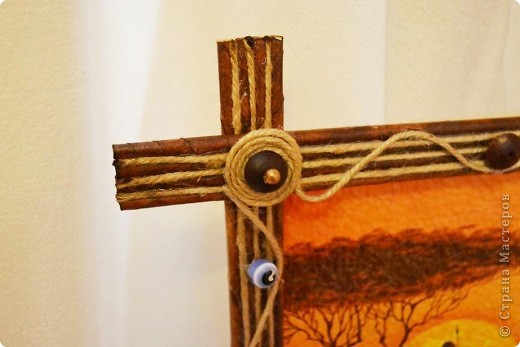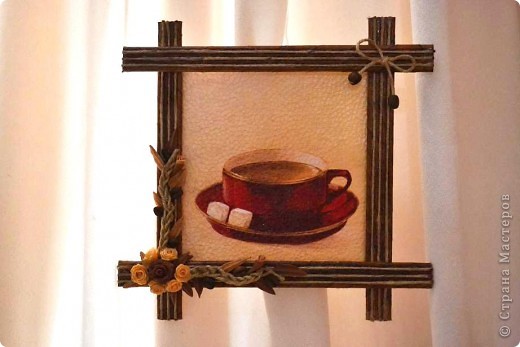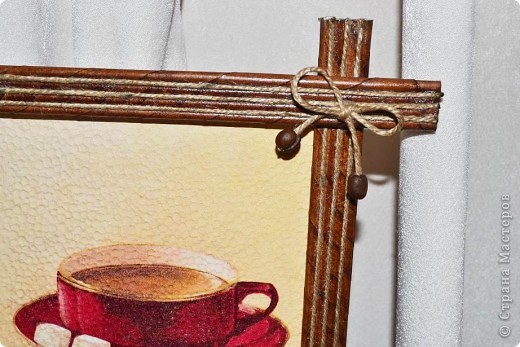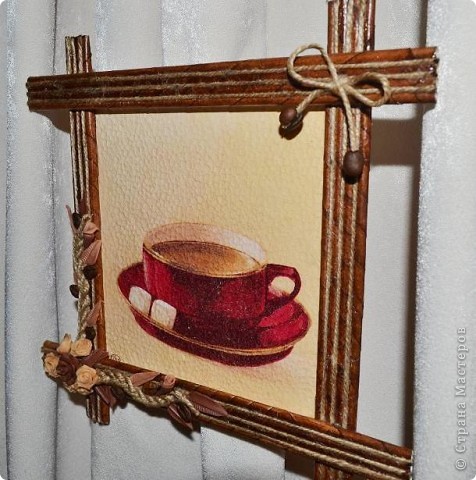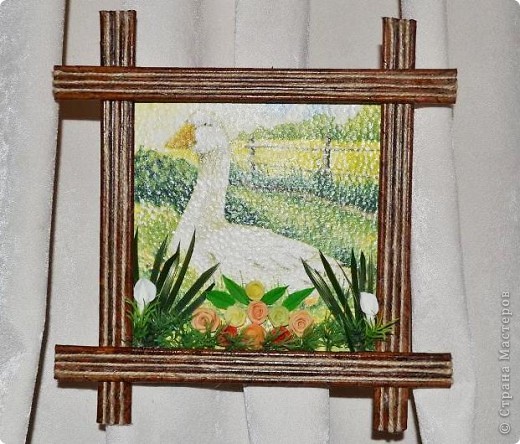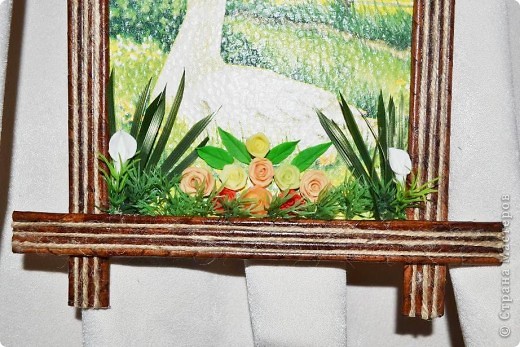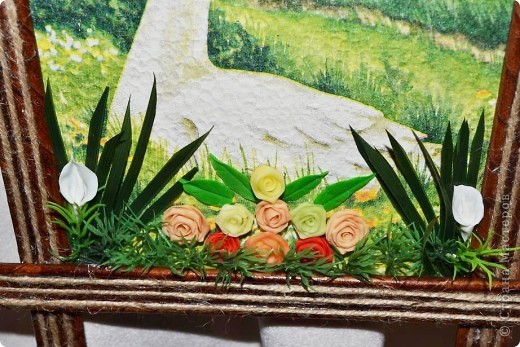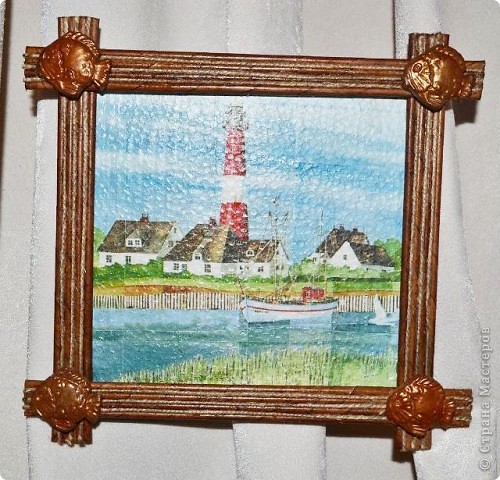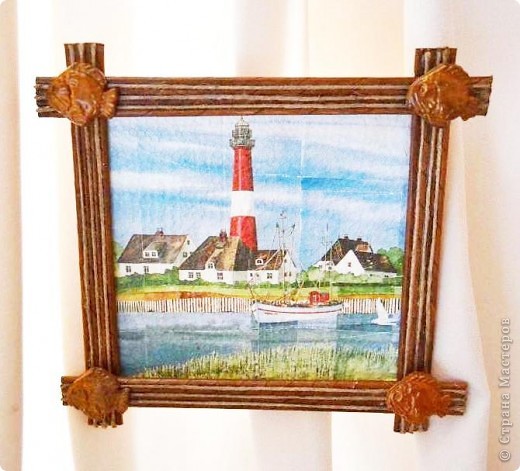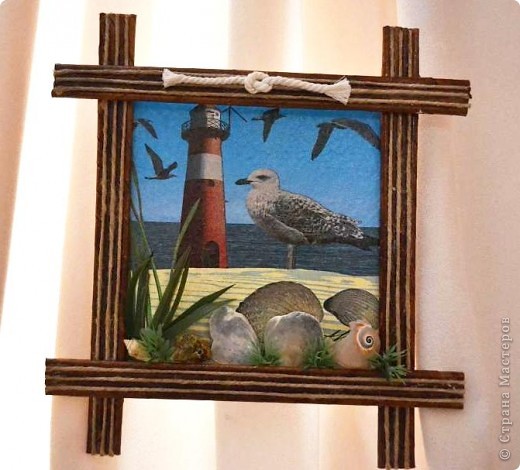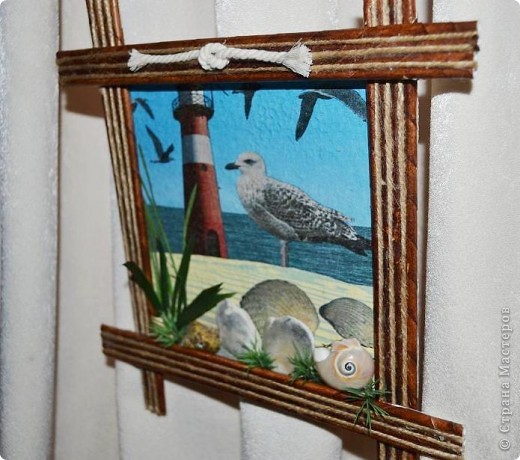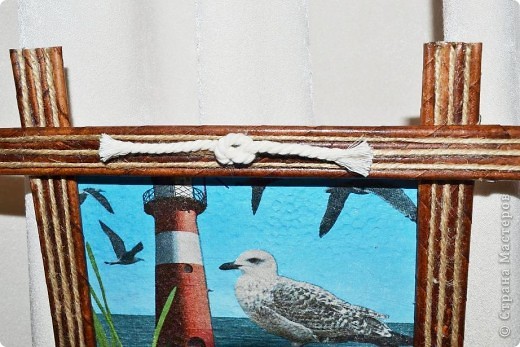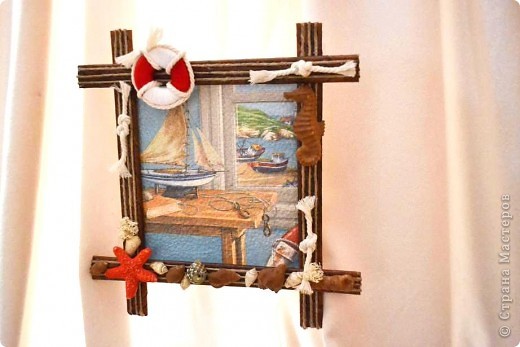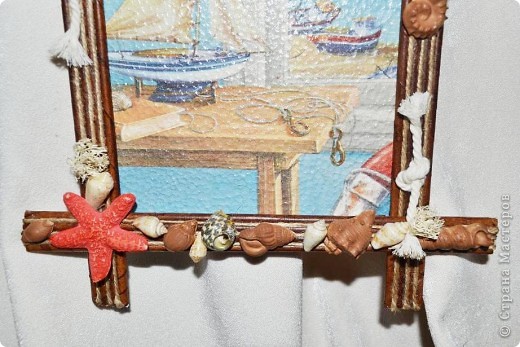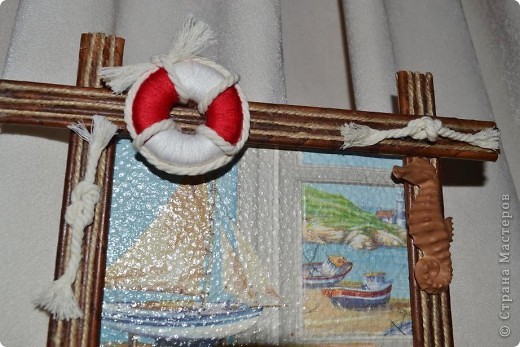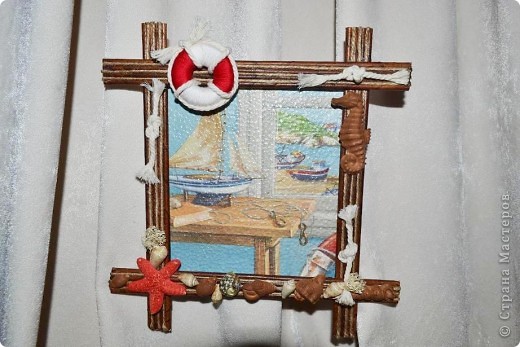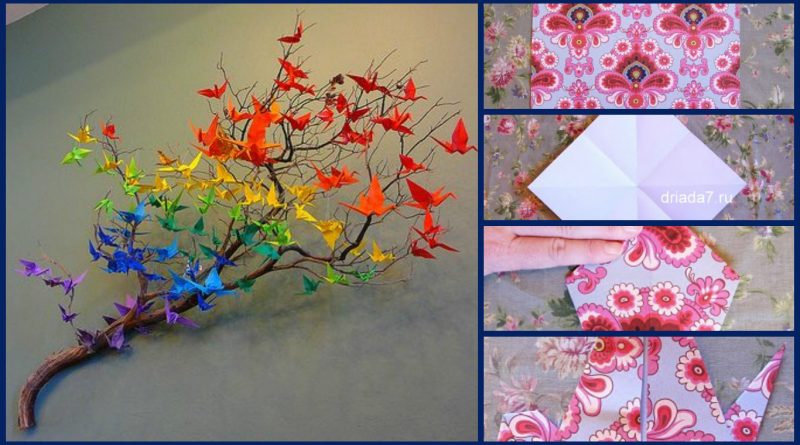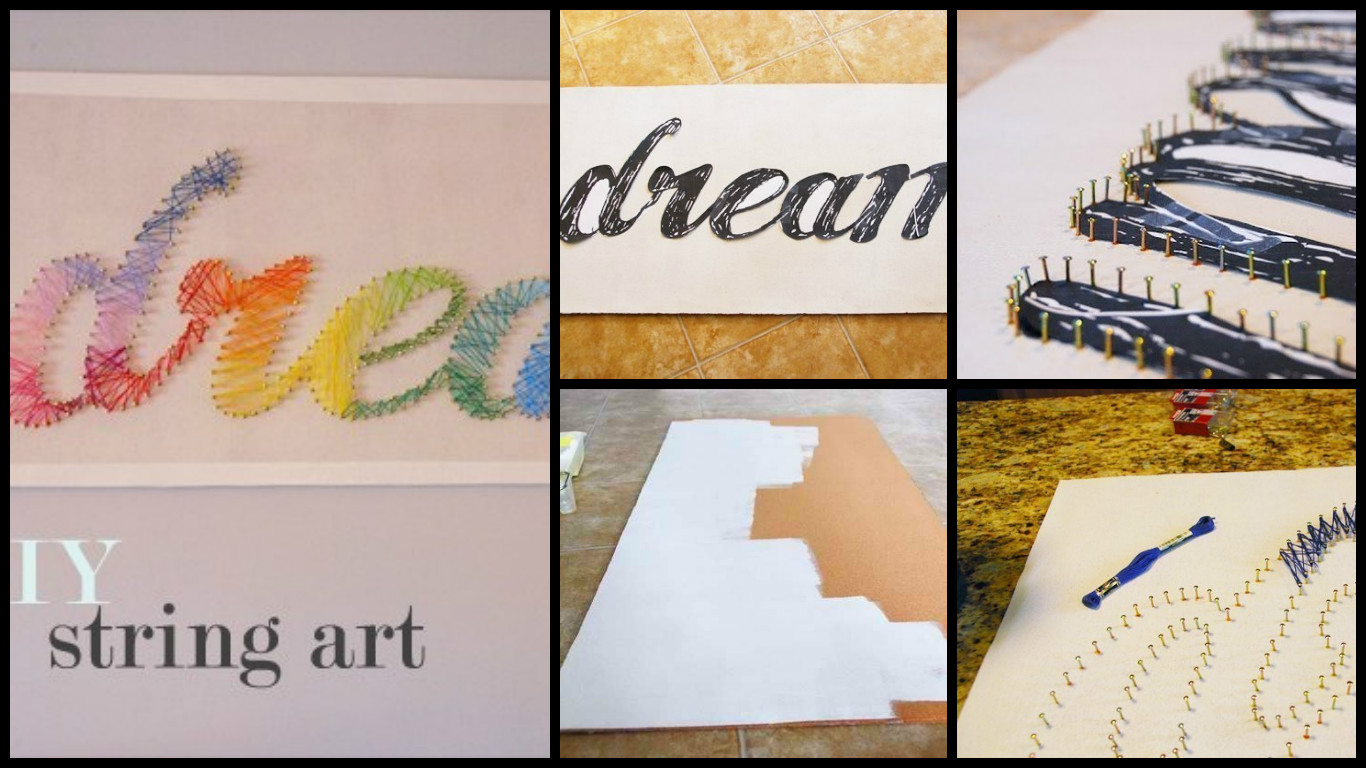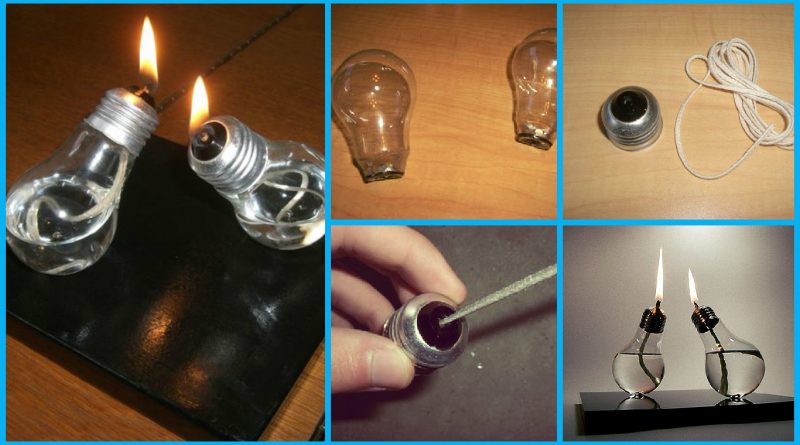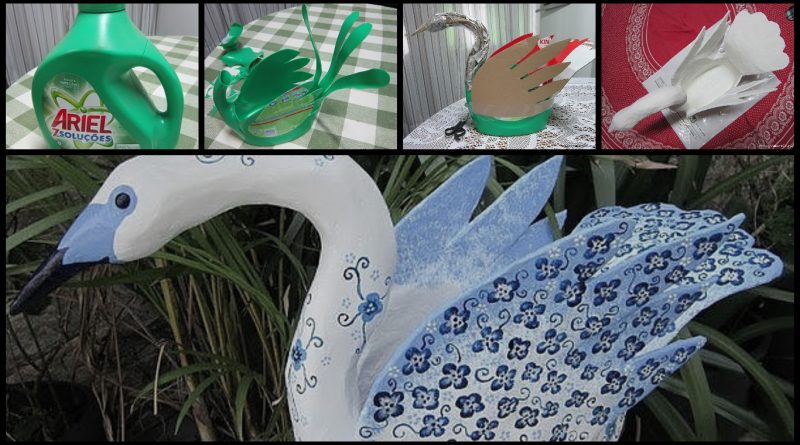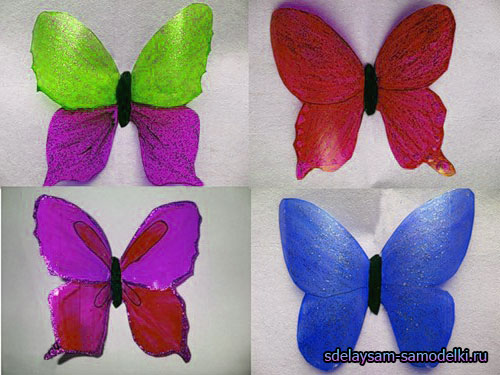
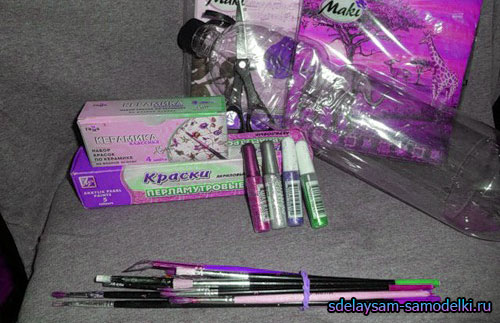

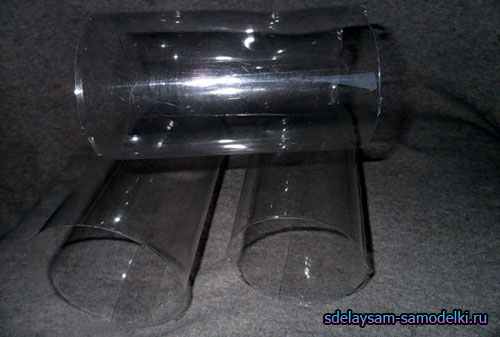
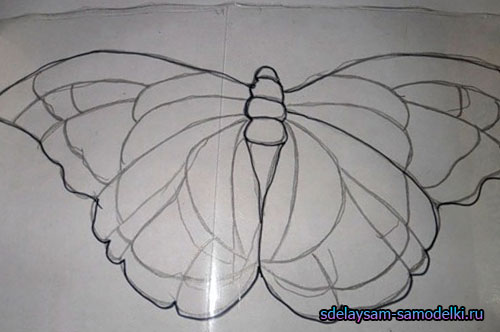


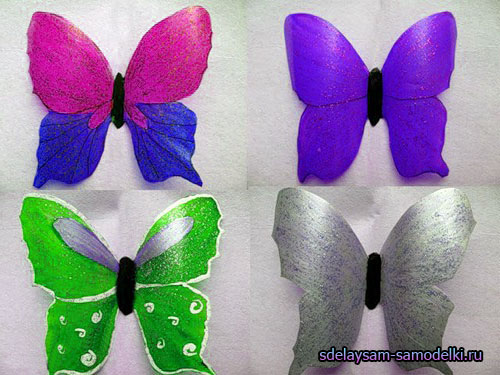

Beautiful Corrugated Paper Flower

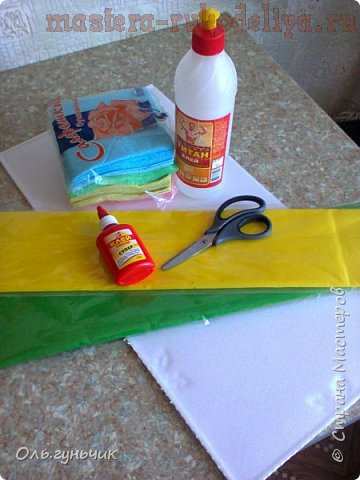
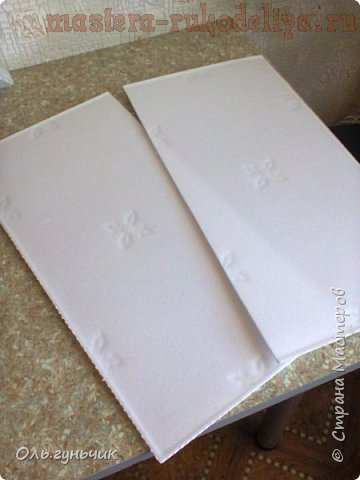
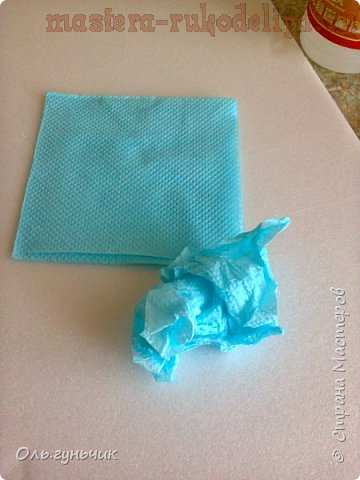

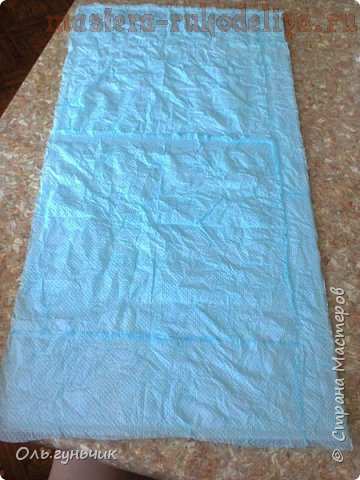
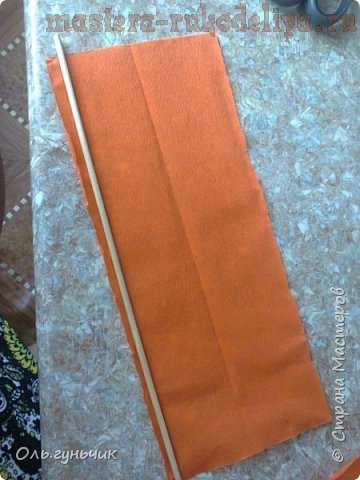
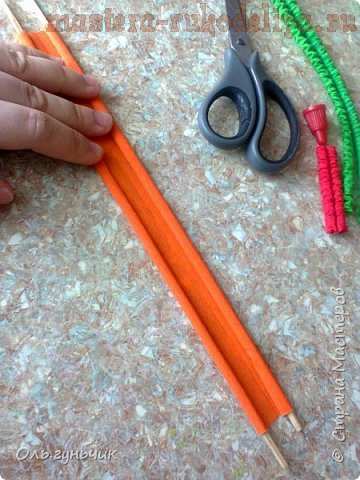
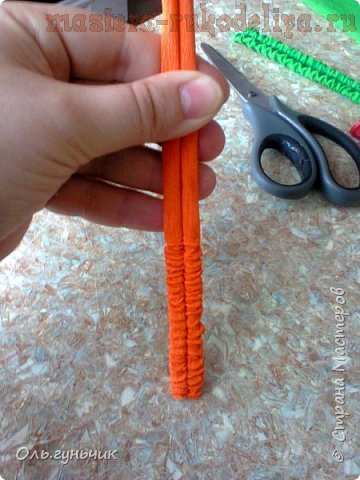
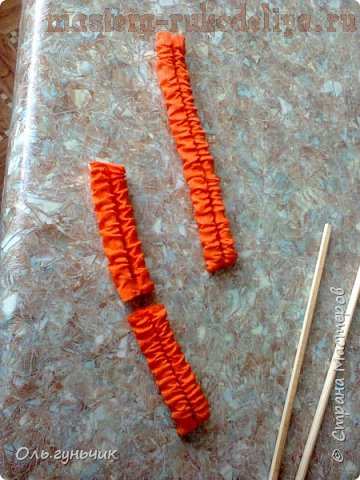
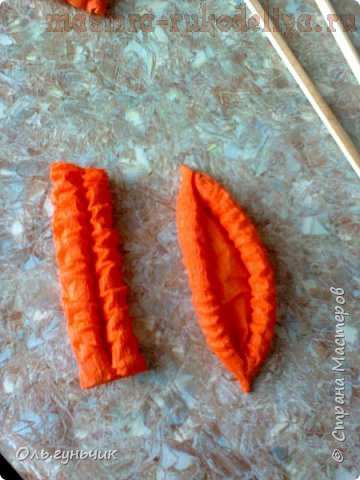
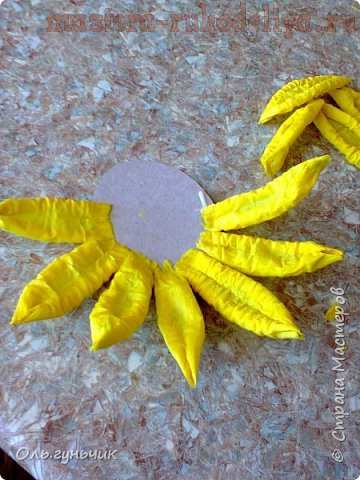

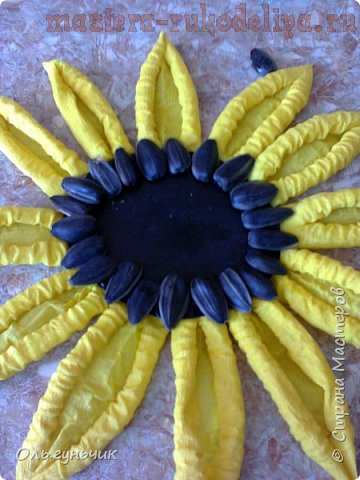

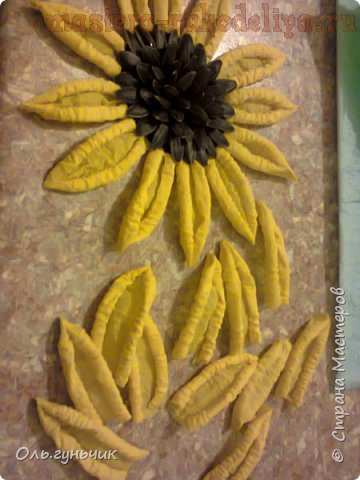
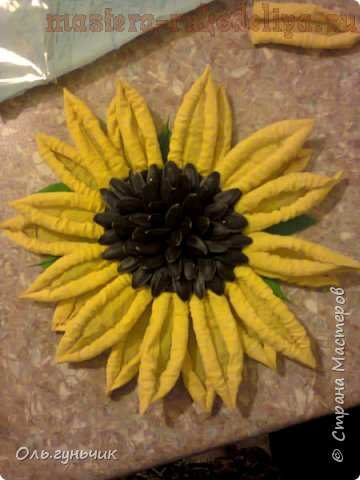
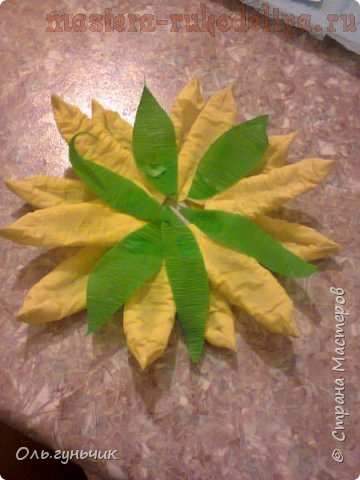

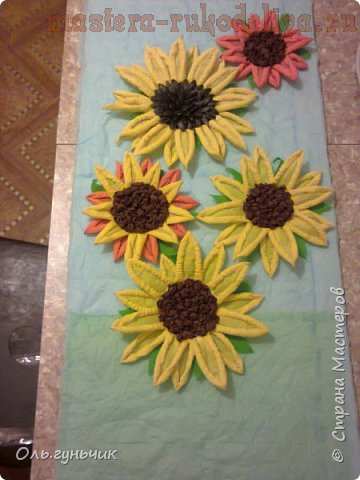
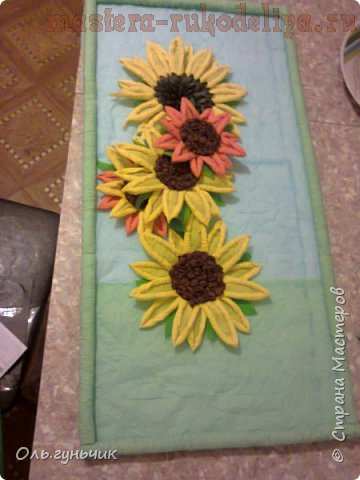


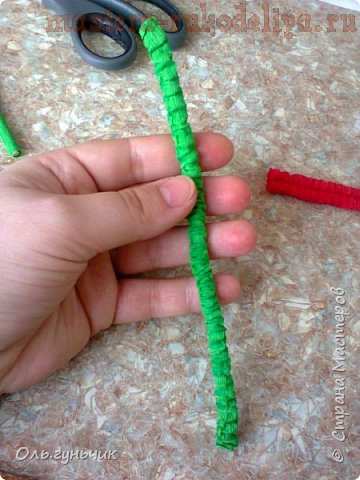
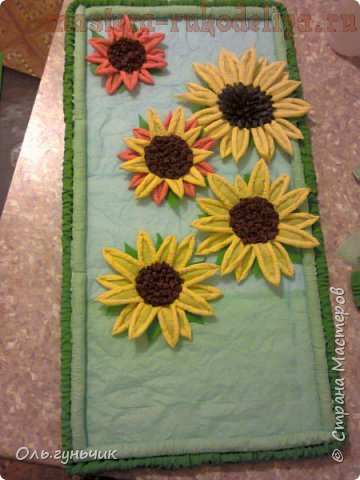
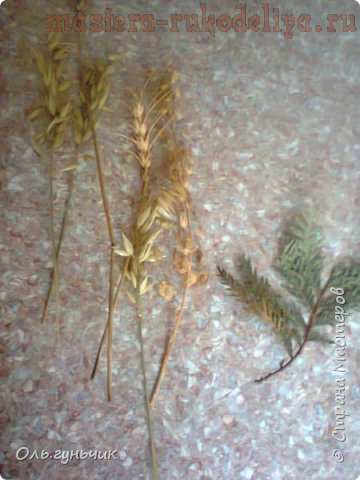
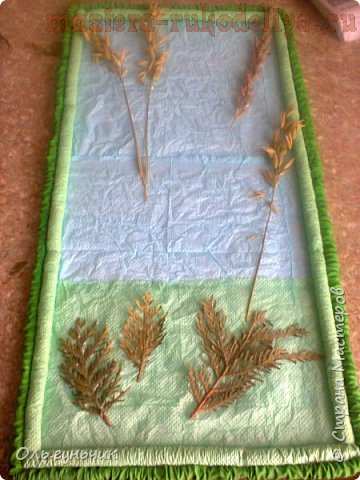
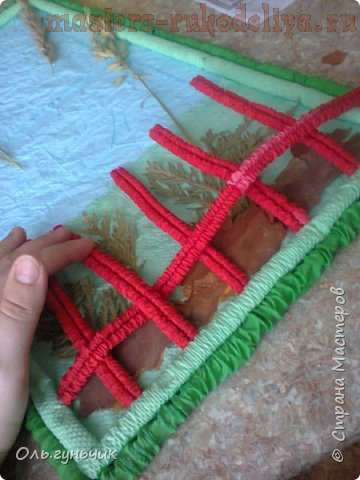

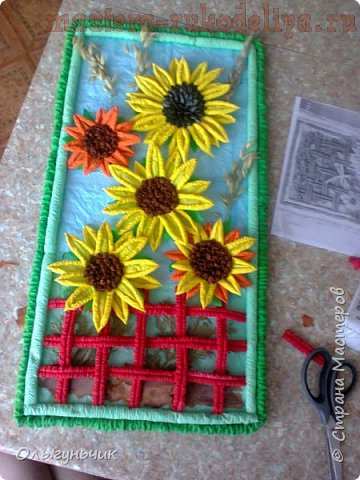
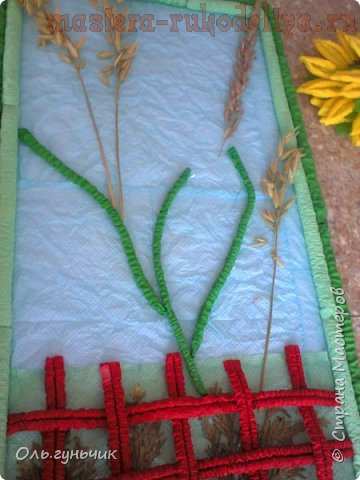


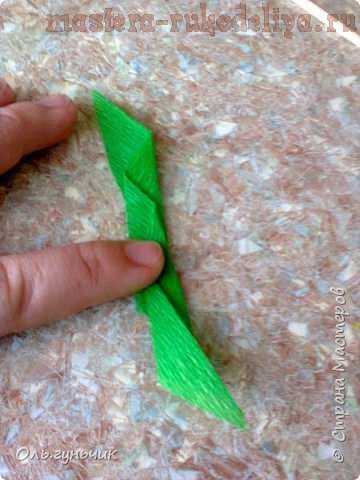
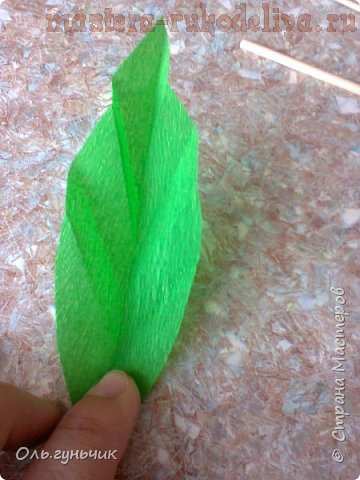
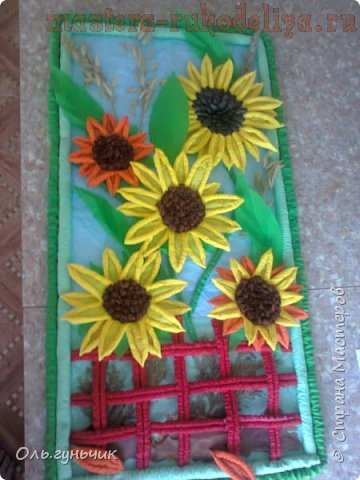

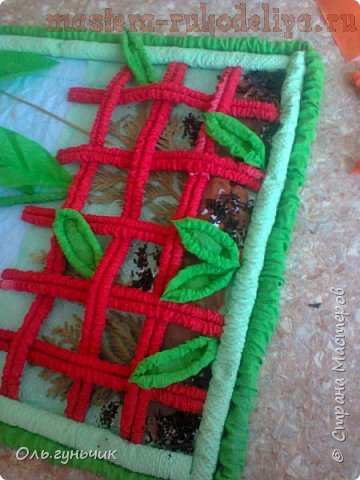
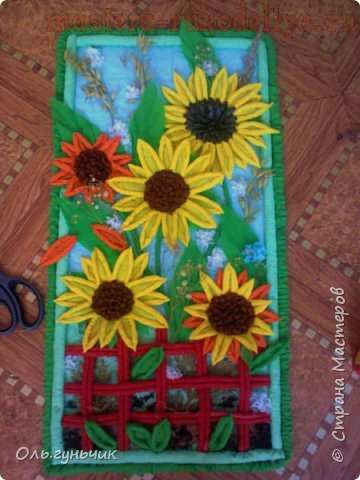
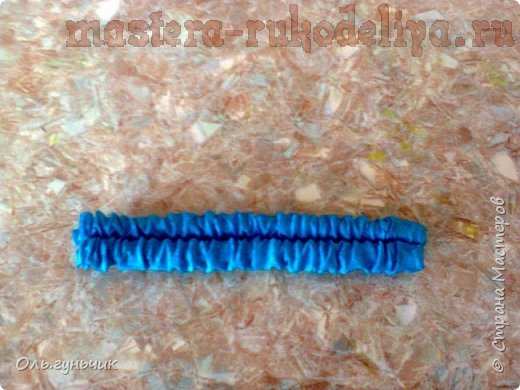
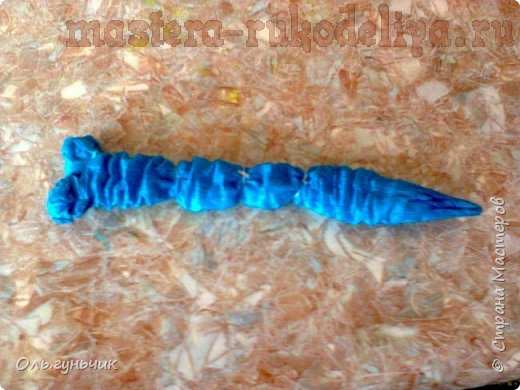


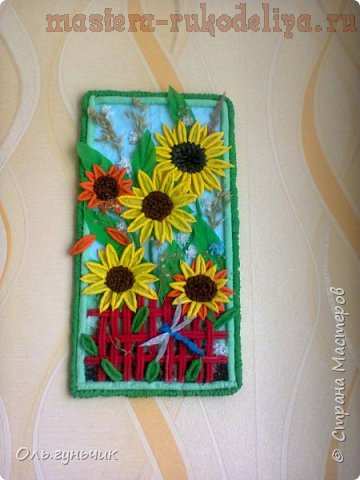
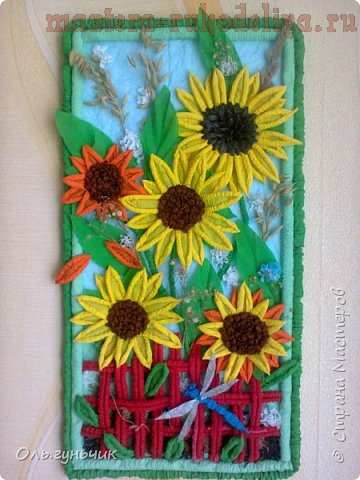
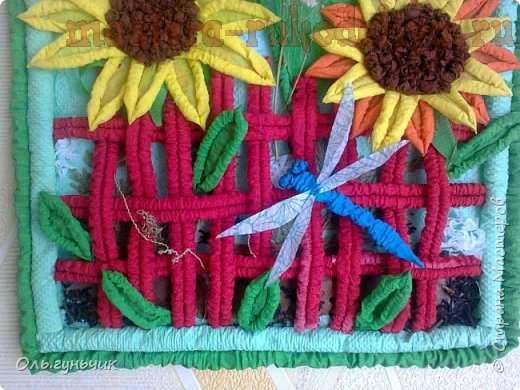


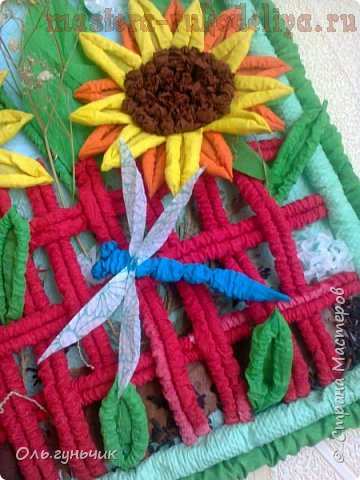

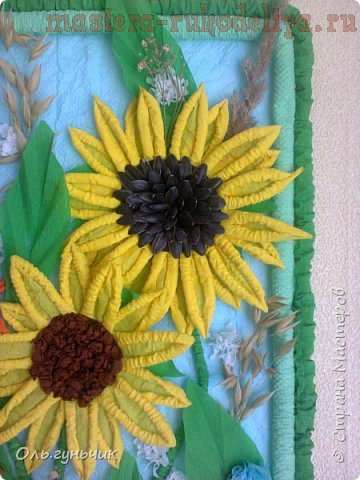
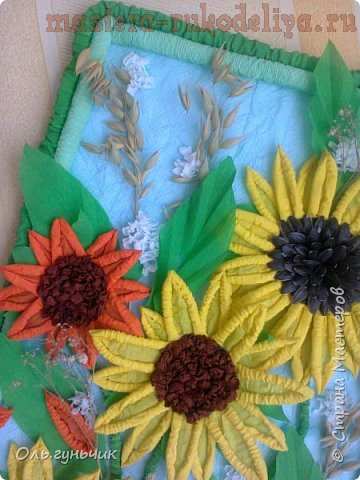



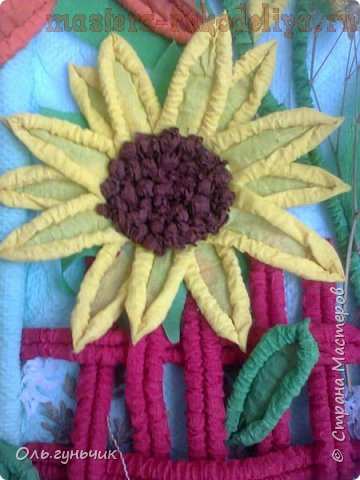


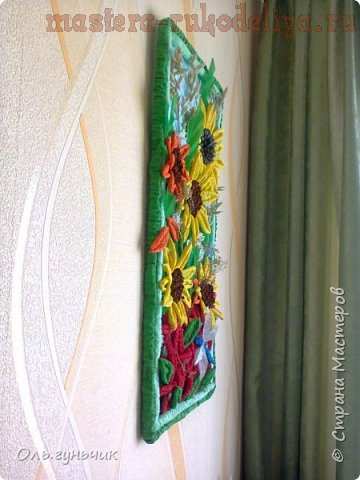

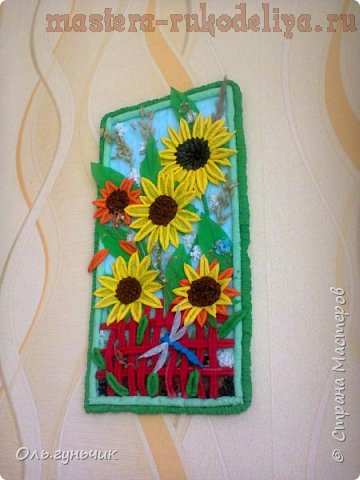
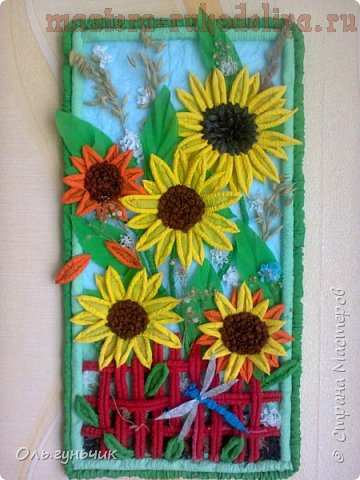
DIY: Beautiful Pastel paper Photo frame
Today we want to show you photo frame, it’s for my little daughter !!! The process of creating a framework, I photographed, of course it is far from the present tutorial, but this is my first experience please do not judge strictly. It may be useful for beginners, my mini tutorial before buying ready boksiki can work out here on this, without any extra costs. Look what happened.
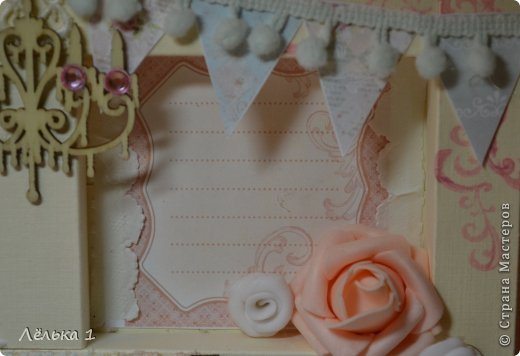 Buttons tender, very pleasant to me, hence the name of the entire product. In a jar, canned rose, and of pearl, embodies all the tenderness.
Buttons tender, very pleasant to me, hence the name of the entire product. In a jar, canned rose, and of pearl, embodies all the tenderness.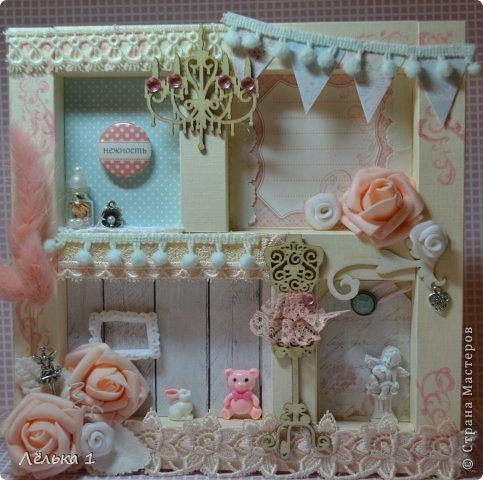
In this Frame, you can insert a photo or to make an inscription, the white roses of plastics, peach rose.
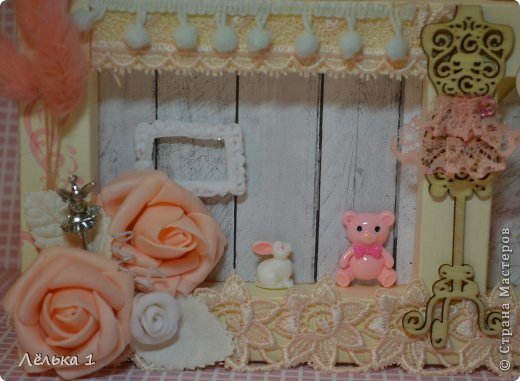
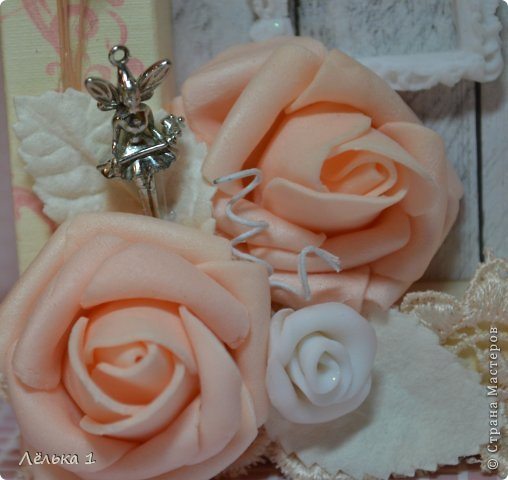
There angelok, brads with the name “Rose” heart “made with love”.
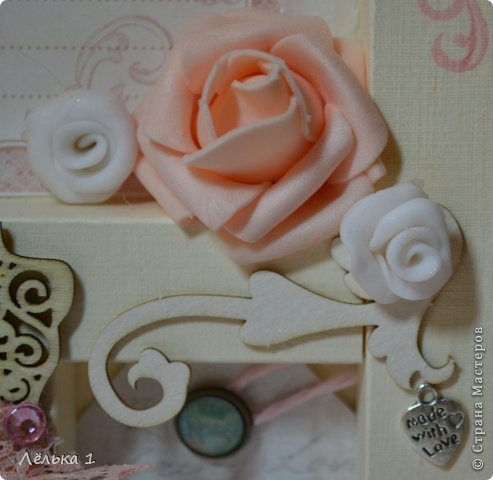
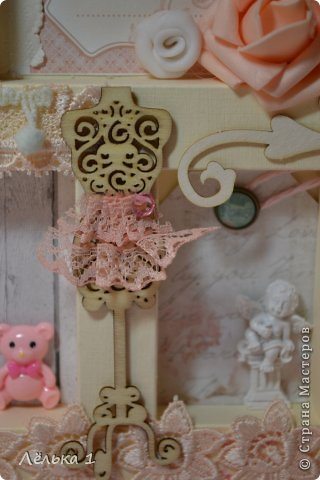
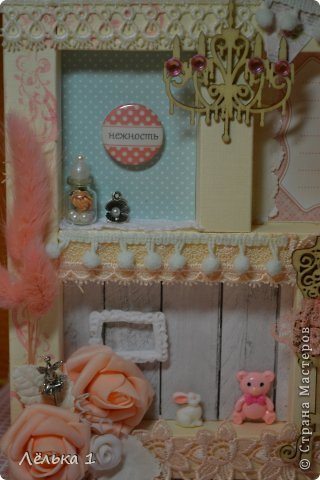
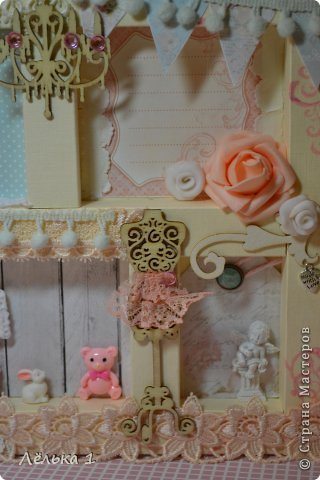
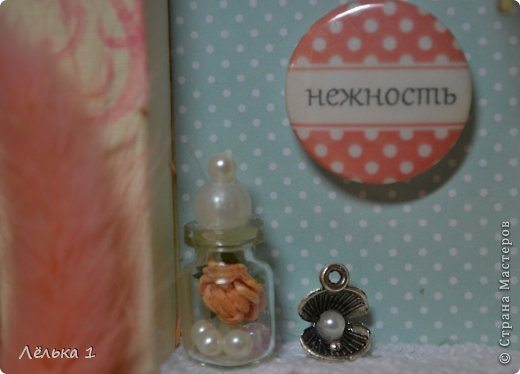
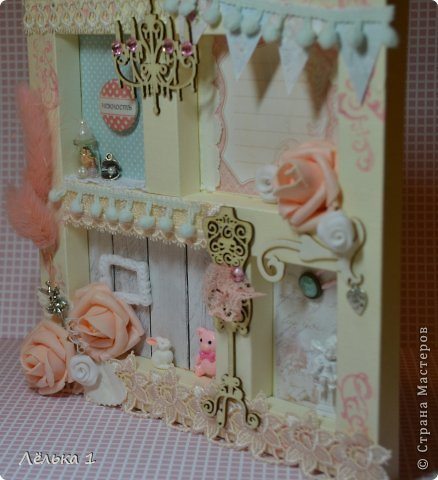
After design that you shows above, Now time to making.
Required Material:
1. Pastel paper (or watercolor, or skrapbumaga) and a beer carton size 20×20
2. Line
3. Pencil
4. Cutter
5. Scissors
6. Tool for creasing (itself still use a pen that does not write))
I sliced 7 strips of different lengths of paper for pastels, but the same width.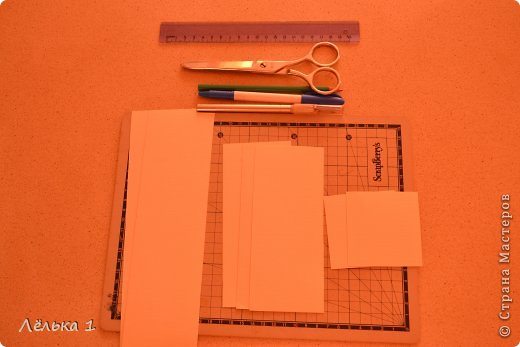
3 pieces of medium size length 16 cm width 7 cm (1h1,5h2h1,5h1).
Measure out and cut, then the width of each band beat (1h1,5h2h1,5h1) = 7 cm, then according to our size.
this small wall 7 cm x 7 cm, performed the same as the middle strips.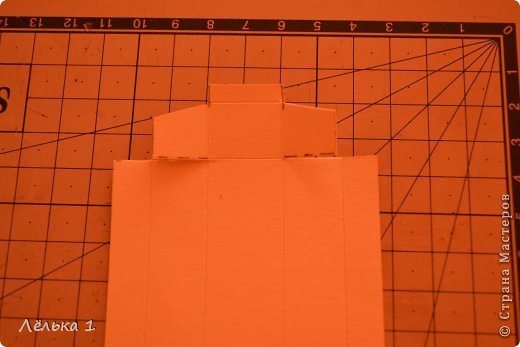
But two large, there are a few others, the width and 7 cm, only the length of 24 cm.
Here I have highlighted in pencil, then you need to cut the dotted lines indicate the slot to make. On a large wall (of 2 pieces) size 24 cm, top and bottom postpone 0, 5h1, 5h20h1, 5h0, 5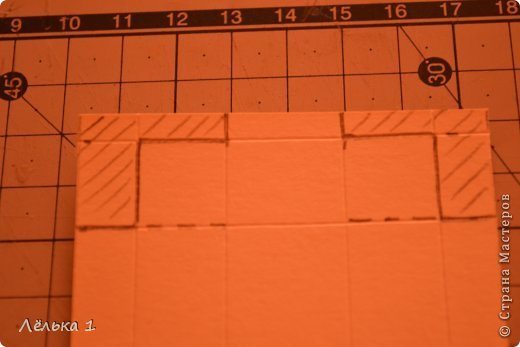
That happened to us when we probigovali long strips and cut along the lines of the previous photo.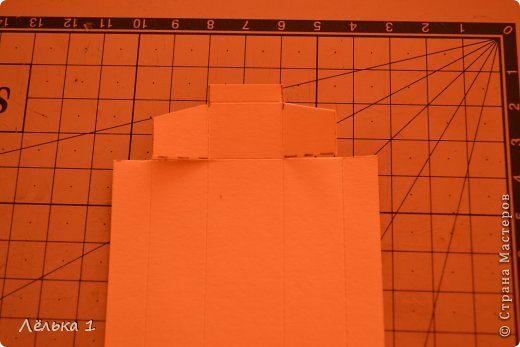
Fold along the grooves.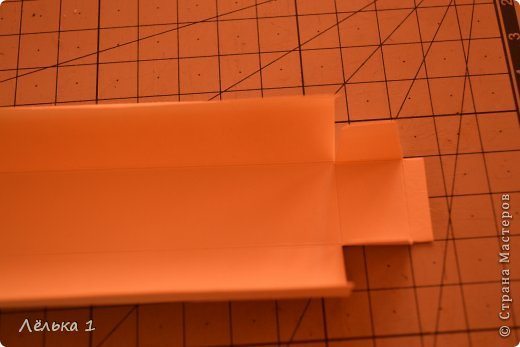
coat with glue to one side, pressed against the inner walls.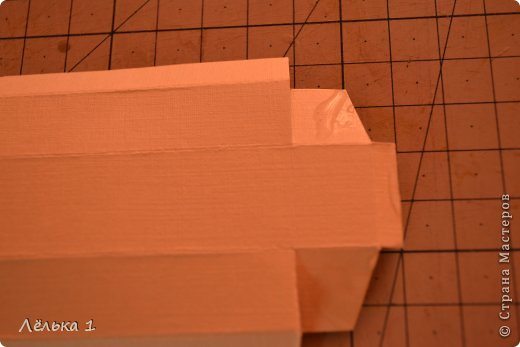
So what should we succeed.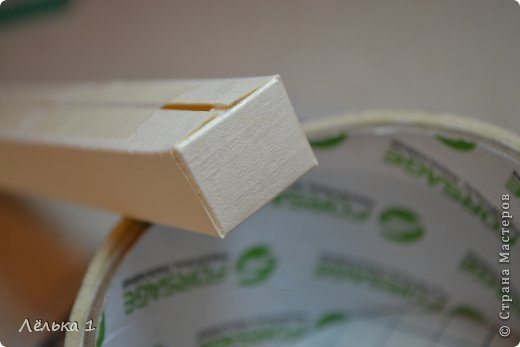

In order not to disperse the wall, then I strengthened mounting tape.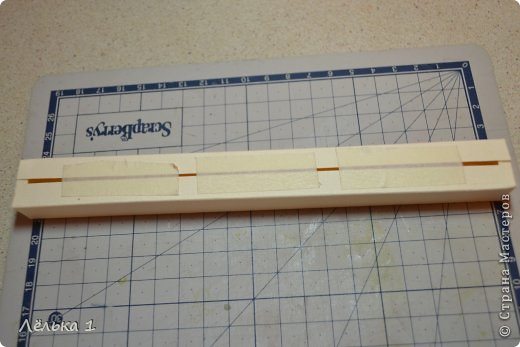
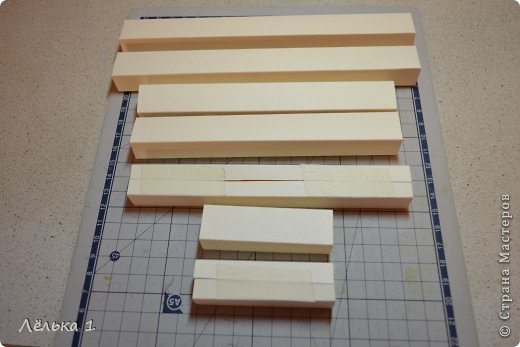
Then take a beer in my 20×20 cardboard pasted over his paper for pastels, as well as walls. We put the walls to the base and if you are satisfied, then all sticking. Here frame and ready !!! And then let the flight of your imagination and decorate to your liking.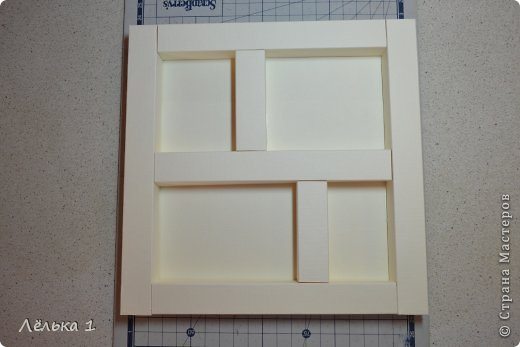

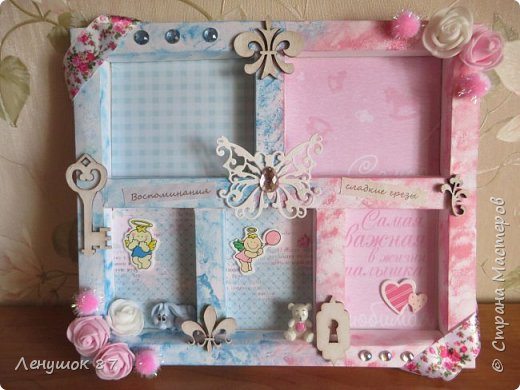
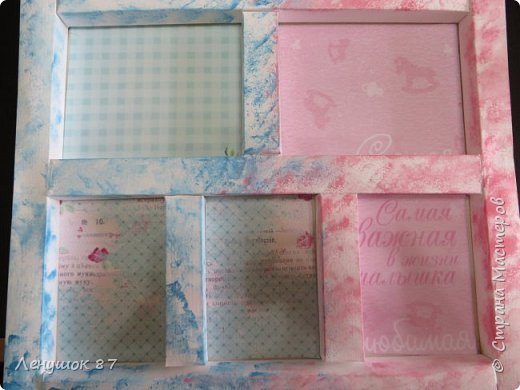


DIY: Khokhloma in quilling techniques

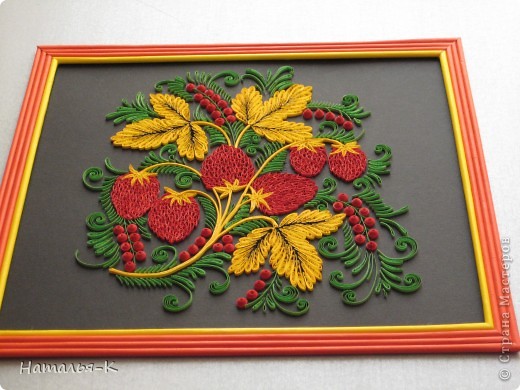 If you do not mind, I’ll show you how to do your job. Maybe someone else interested. First made (on the picture found on the Internet) berries.
If you do not mind, I’ll show you how to do your job. Maybe someone else interested. First made (on the picture found on the Internet) berries.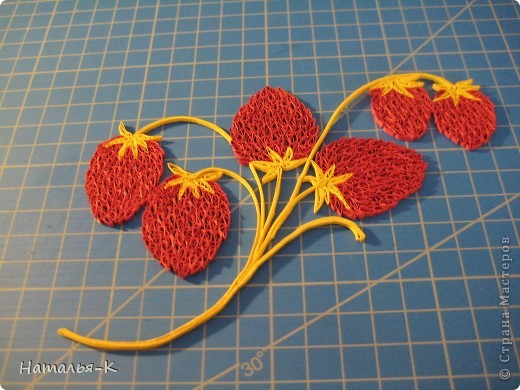 Then transferred them to the black cardboard.
Then transferred them to the black cardboard.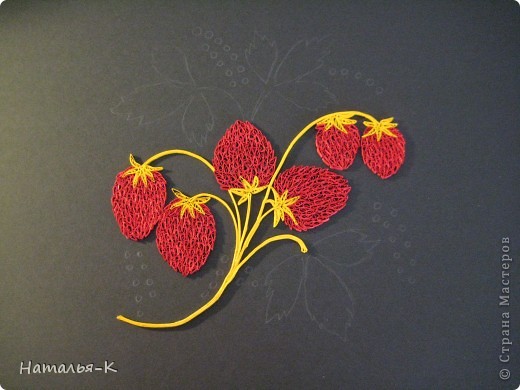 Berries gathered here in this way. Stripes 2 cm. The width of 1.5 mm is wound and gave them blossom. Strongly they were dismissed because the paper density of 130. Well, then how did you see droplets. And of them was a berry.
Berries gathered here in this way. Stripes 2 cm. The width of 1.5 mm is wound and gave them blossom. Strongly they were dismissed because the paper density of 130. Well, then how did you see droplets. And of them was a berry.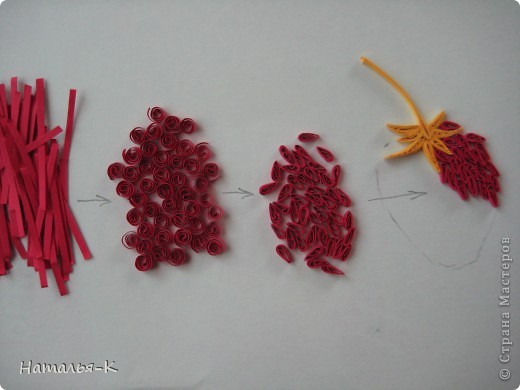 Then I collect leaves.
Then I collect leaves. Painted sheet of paper under the film. And on it long glue droplets,,,,
Painted sheet of paper under the film. And on it long glue droplets,,,, Black rim glued in half, but not until the end. In the crook of loop turns, these loops are glued to the center. Due to their central vein is obtained.
Black rim glued in half, but not until the end. In the crook of loop turns, these loops are glued to the center. Due to their central vein is obtained.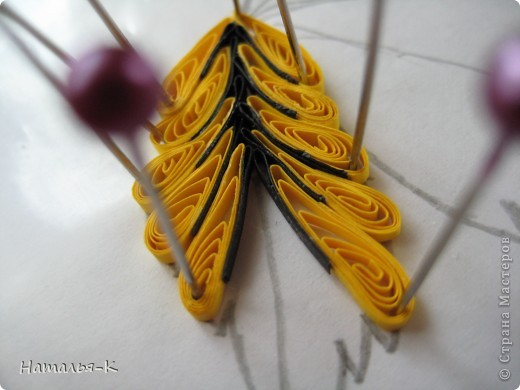 The size of droplets is different. I tried to fit into the picture
The size of droplets is different. I tried to fit into the picture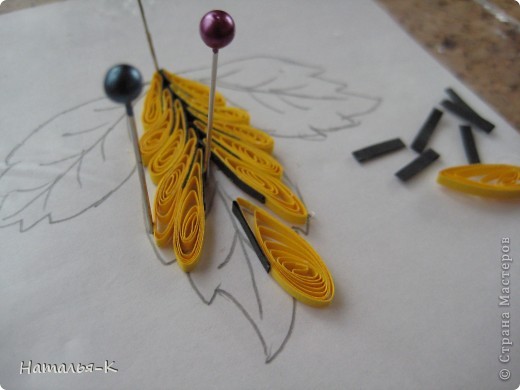 That leaves all ready.
That leaves all ready.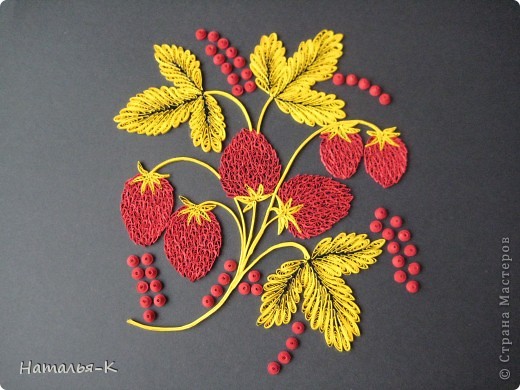 I begin to perform curls.
I begin to perform curls.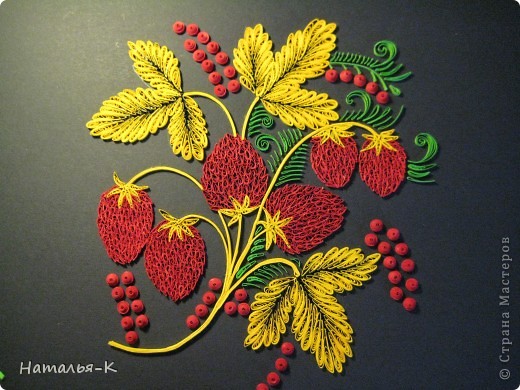 And redcurrants immediately began to play, right?
And redcurrants immediately began to play, right?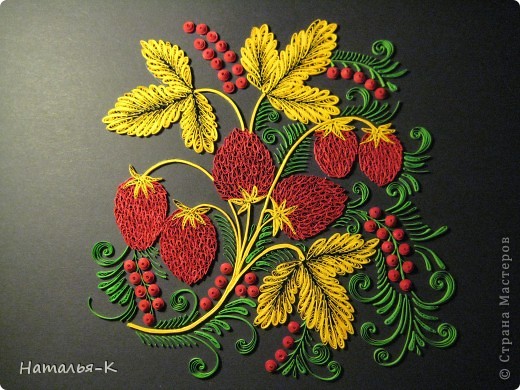 That’s what happened in the end.
That’s what happened in the end. And now show closer on all sides.
And now show closer on all sides.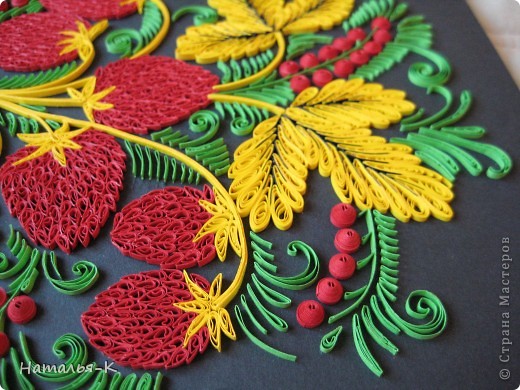

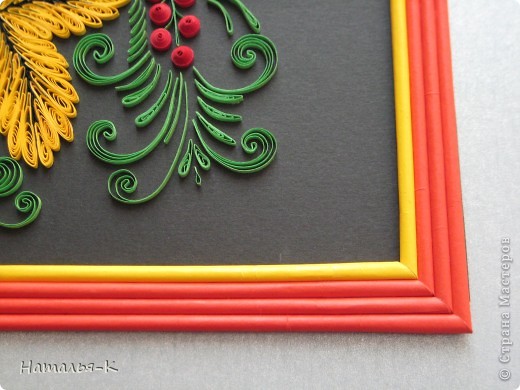

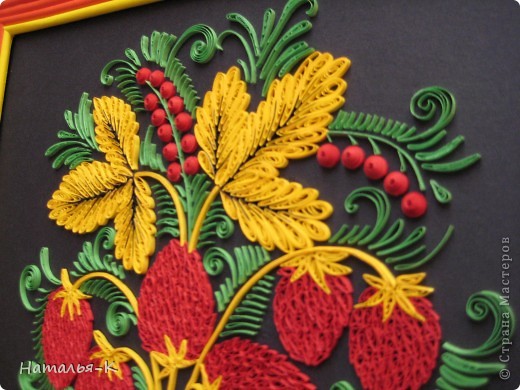
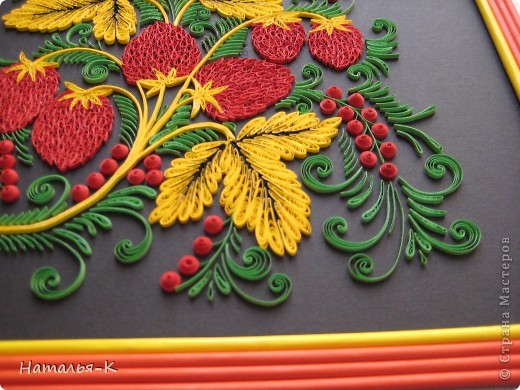

How to make a paper crane
Crane – a symbol of wish fulfillment. Cranes can be, for example, decorate a corner in my room:
Make a curtain of cranes lib mobile.
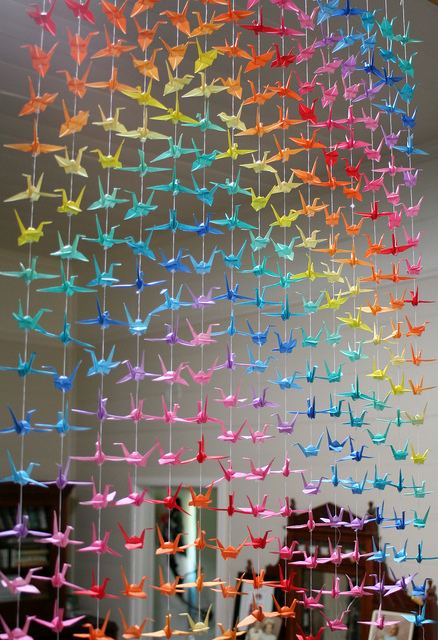 Well, how to resist and not to get to work (desire in all of us and is always there – in store)))
Well, how to resist and not to get to work (desire in all of us and is always there – in store))) Prepare a sheet of paper with color – eg the white color and the sides – so you will be easier to navigate while working.
Prepare a sheet of paper with color – eg the white color and the sides – so you will be easier to navigate while working.
We proceed to the manufacture of the crane.
1. Expand the list.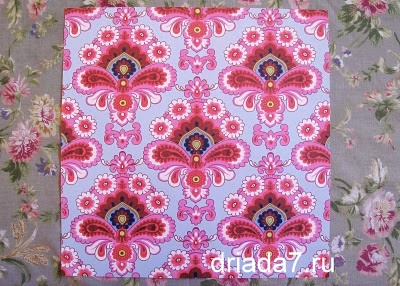 Svernite sheet diagonally colored side out.
Svernite sheet diagonally colored side out. Then, the resulting triangle folds in half and then fold the triangle in half, aligning the fold line.
Then, the resulting triangle folds in half and then fold the triangle in half, aligning the fold line.
Expand the list and place the colored side to the table.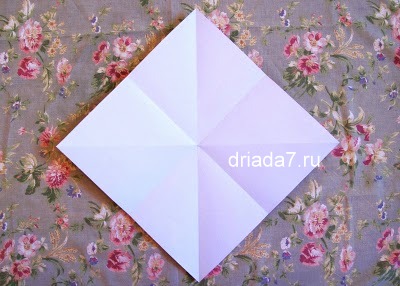 Squeeze together the two corners of one diagonal
Squeeze together the two corners of one diagonal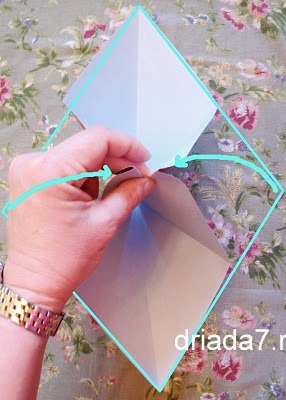 Fold them into the bottom corner, addressed to you
Fold them into the bottom corner, addressed to you Fold the second part as well, lowering the upper corner of the sheet. Here’s what happened.
Fold the second part as well, lowering the upper corner of the sheet. Here’s what happened.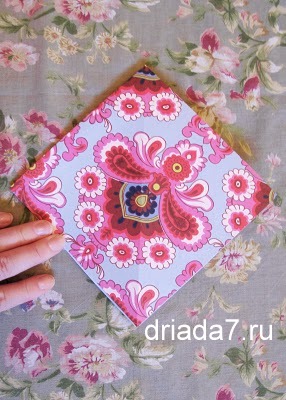 Inside can be seen rolling in “side” squares.
Inside can be seen rolling in “side” squares.
 Upper square lift.
Upper square lift.
7. Install the outer edge of the sheet already tucked into the folds of the surface right, combining a central fold line to the edge of the napkin.
Also do and left.
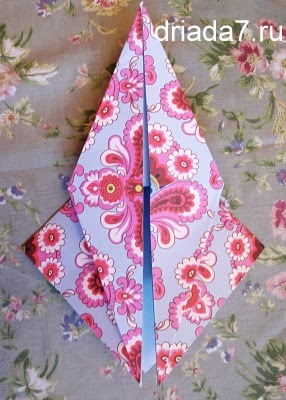 8. Here’s what you should have.
8. Here’s what you should have. 9. Turn the folded sheet, repeat the last two steps with the other half of the sheet
9. Turn the folded sheet, repeat the last two steps with the other half of the sheet 10. Right angle remained at the center of the sheet, turned his sharp outer corners.
10. Right angle remained at the center of the sheet, turned his sharp outer corners.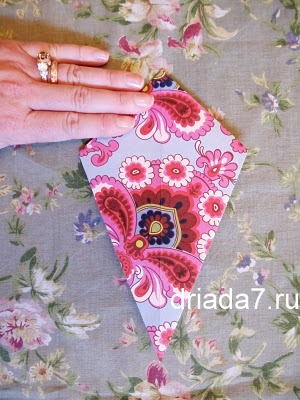 The folded sheet must lie an acute angle to you.
The folded sheet must lie an acute angle to you.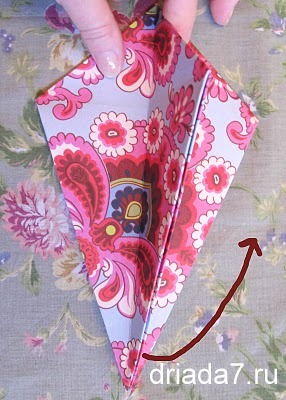 Hold the center of the blank hand, wrap the inner corner towards the first right.
Hold the center of the blank hand, wrap the inner corner towards the first right.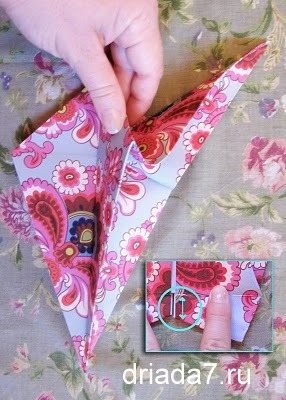 urting the fold line. The result was the tail of a crane.
urting the fold line. The result was the tail of a crane.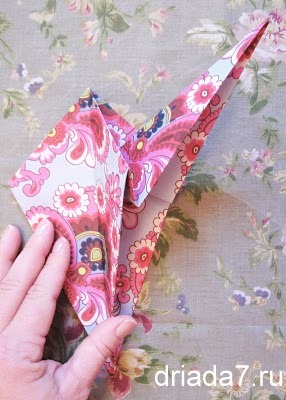 The blank will take the following form:
The blank will take the following form: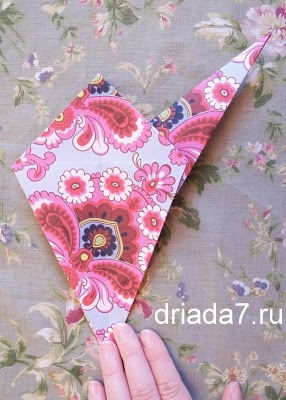 Similarly, make left corner lies within wrap outwardly. This neck.
Similarly, make left corner lies within wrap outwardly. This neck.
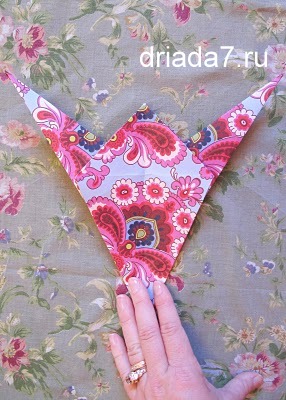 Bend of the acute angle. Get your head crane.
Bend of the acute angle. Get your head crane. Front view of the head. Hurting the fold line.
Front view of the head. Hurting the fold line.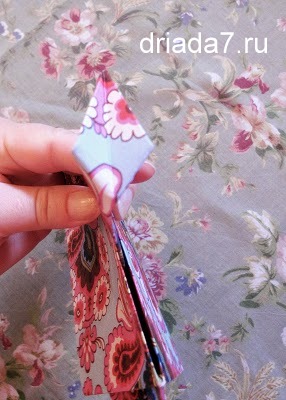 turns away from the workpiece two other angle – wings.
turns away from the workpiece two other angle – wings.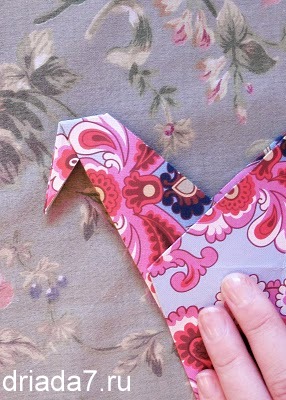 denote folding lines for the wings.
denote folding lines for the wings.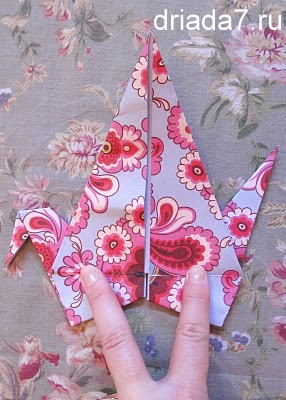
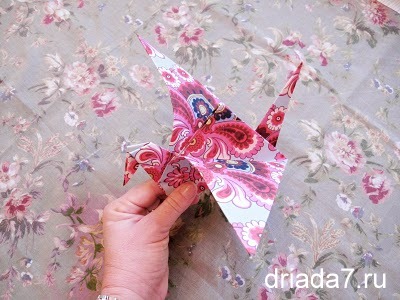 Expand the sides wings.
Expand the sides wings.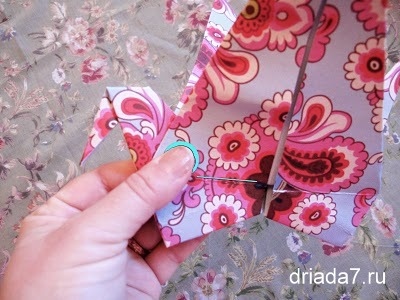 Crane is ready!
Crane is ready!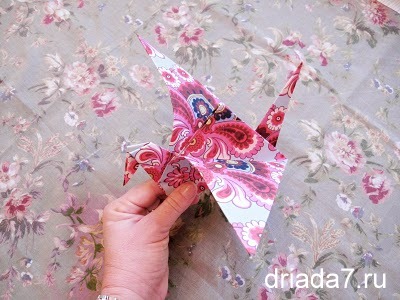
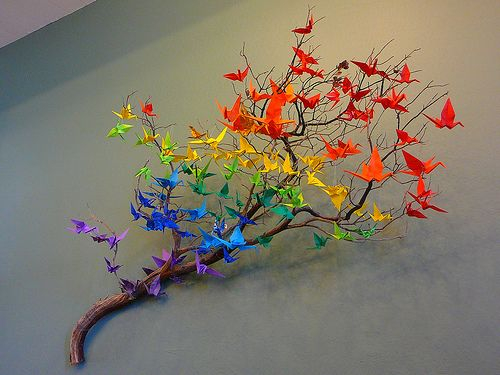
DIY: Nail and String Art

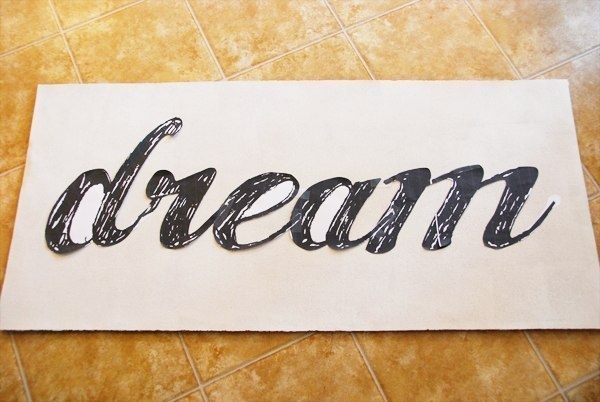

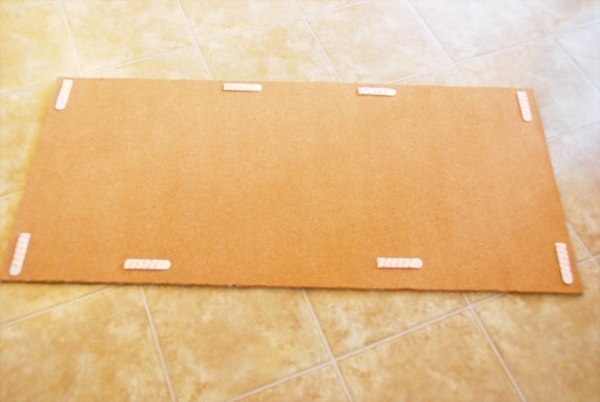
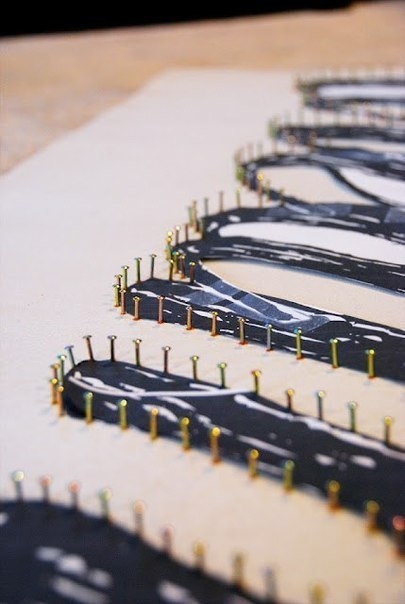
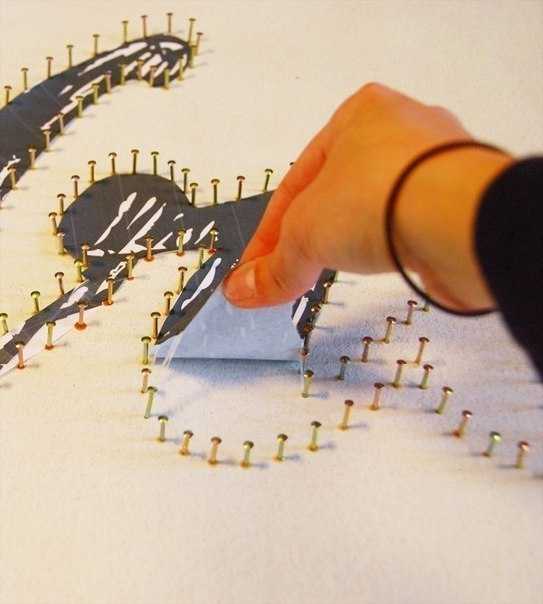
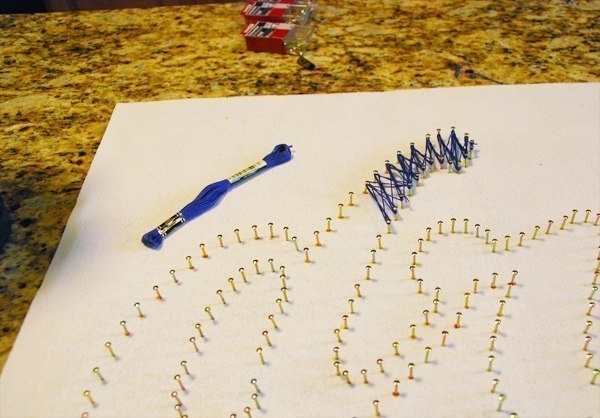
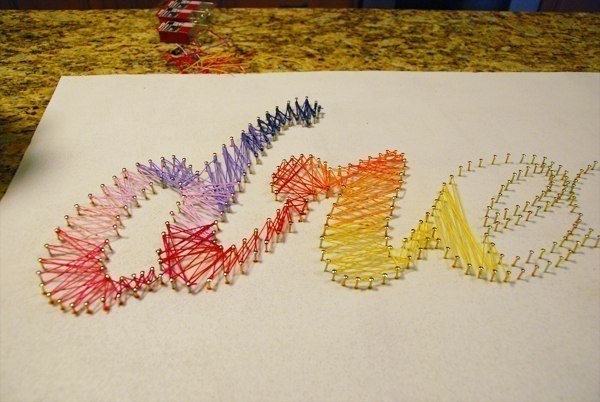

Wind Chime Using Old Keys
Probably, every family has a warehouse of useless things. Would not it be great to find them a new life! Do you have such an opportunity: buy a second life to old keys 🙂
So, we need:
1. Keys.
In my practice, I have been manufacturing wind music experience of old keys. I want to warn at once: hollow keys, we will not do, they are not heard, we need the key alloy. I decided not to repeat them, and to find the key of all shapes and sizes on the same instance.
2. Gold enamel sprays acrylic enamel in the bank.
3. twine, thread floss.
4. Beads.
5. Sleigh Bells (bells).
6. Glue.
In my work I use glue for ceiling tiles: it has no color, smells strong, sticks together firmly, but easily washed by hand.
7. Wire for needlework.
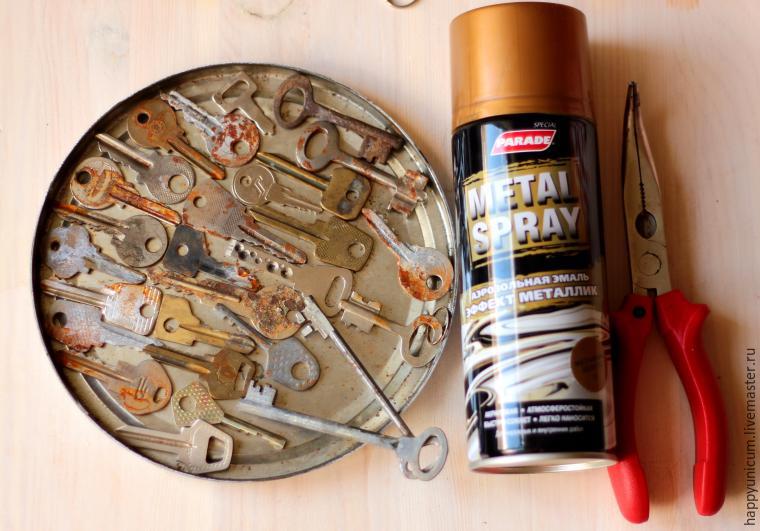 So, we picked up the keys and the five bells ringing now prepare them for painting, I posted them in a metal cover. Then be sure to get out into the fresh air. In the film we begin to spray paint, coloring our Keys thoroughly on both sides.
So, we picked up the keys and the five bells ringing now prepare them for painting, I posted them in a metal cover. Then be sure to get out into the fresh air. In the film we begin to spray paint, coloring our Keys thoroughly on both sides.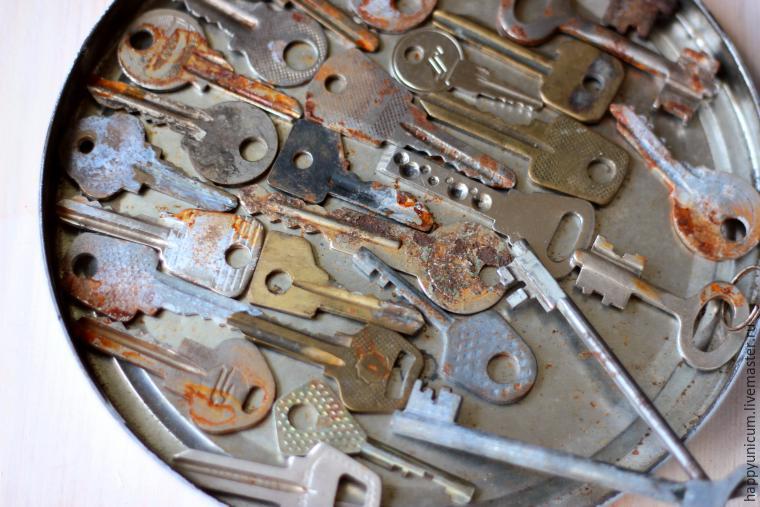

 Keys dried up and that’s what we got:
Keys dried up and that’s what we got: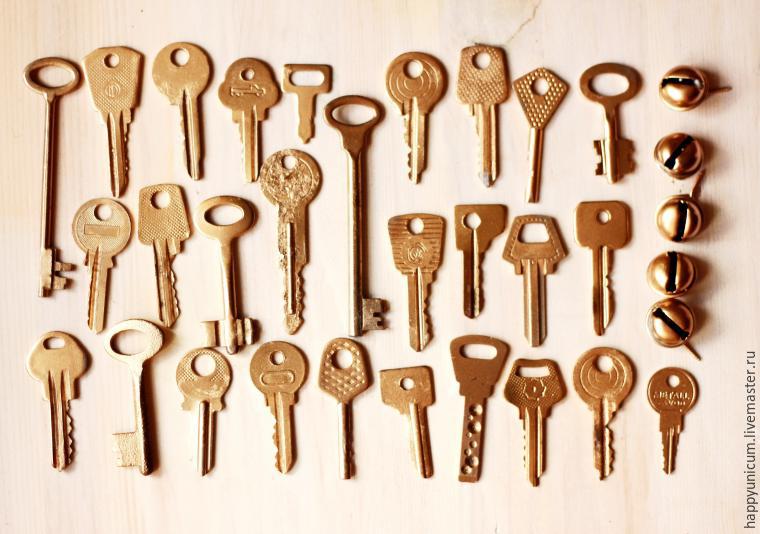 Now zaymёmsya basis for our wind music: it must be a hoop. I chose a hoop with a diameter of 16 cm and only took the inner ring.
Now zaymёmsya basis for our wind music: it must be a hoop. I chose a hoop with a diameter of 16 cm and only took the inner ring.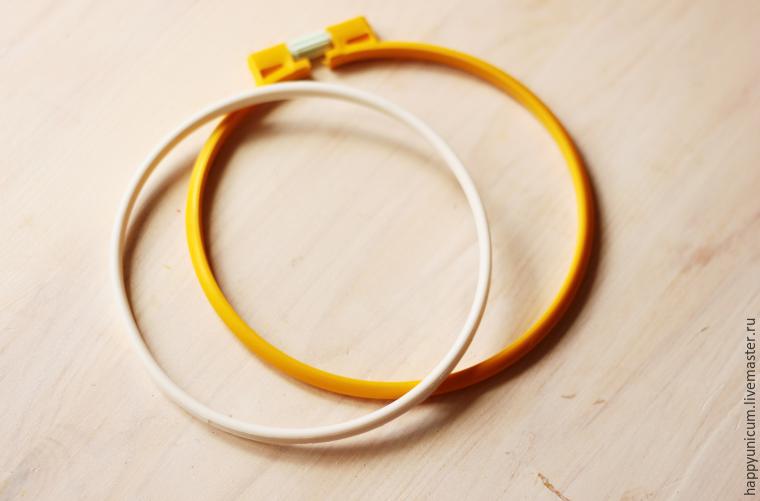 Then we wrapped tightly wrap string:
Then we wrapped tightly wrap string: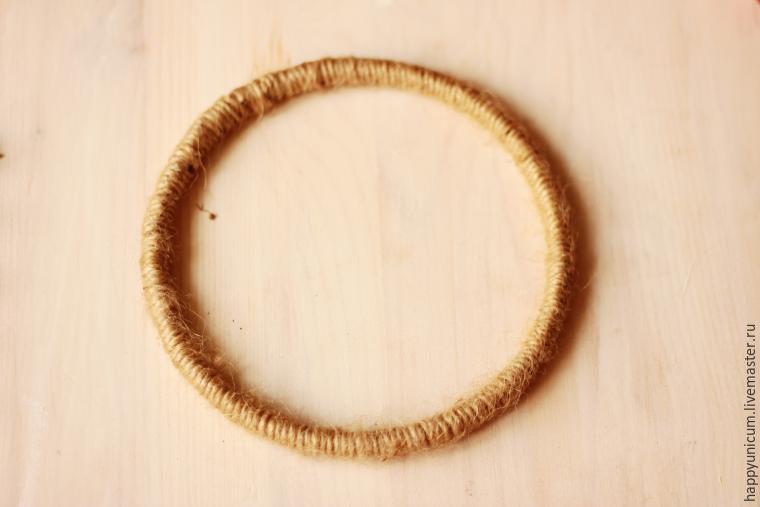 Then wrap wrapped diagonally thread floss: we use the soft blue color, in the future, it will overlap with the wind elements of music:
Then wrap wrapped diagonally thread floss: we use the soft blue color, in the future, it will overlap with the wind elements of music: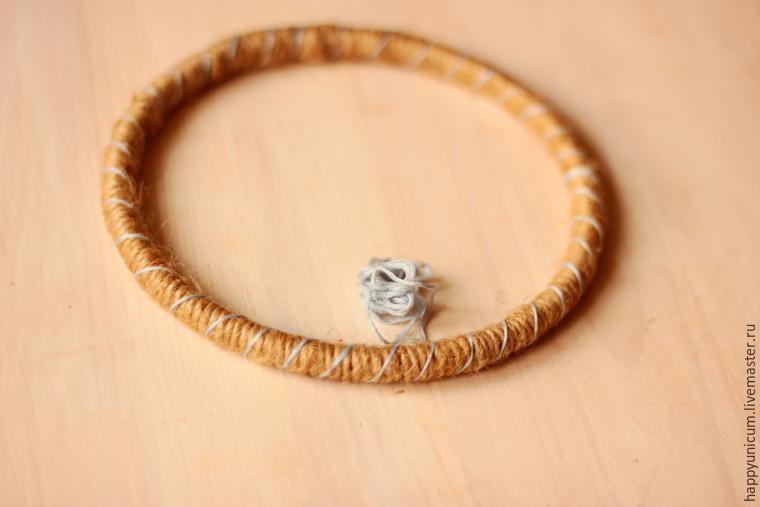 It’s time to choose the color scheme, which will determine the beads and beads.
It’s time to choose the color scheme, which will determine the beads and beads.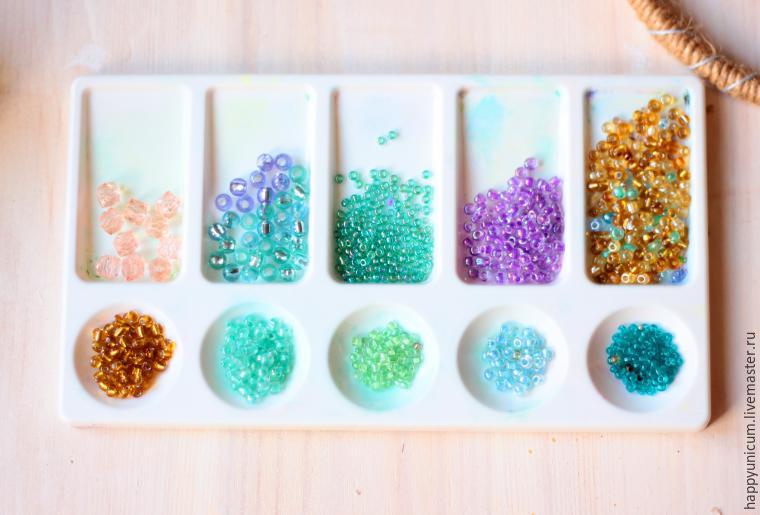 We are making mounts for our base for our share of the circle into four equal parts and connect them strictly in the middle of the circle:
We are making mounts for our base for our share of the circle into four equal parts and connect them strictly in the middle of the circle: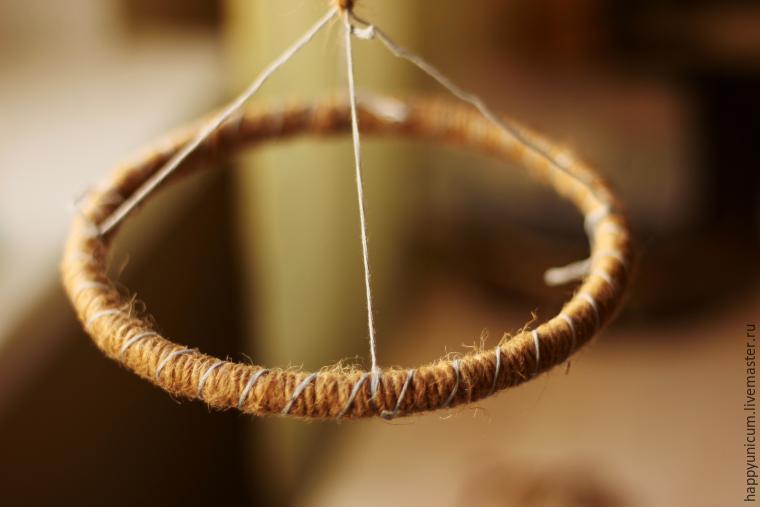 Now we count the number of keys. Cut as much thread sewing with each subsequent thread should be slightly longer than the previous one, a sort of stage. Attach a simple winding thread on the base in use glue.
Now we count the number of keys. Cut as much thread sewing with each subsequent thread should be slightly longer than the previous one, a sort of stage. Attach a simple winding thread on the base in use glue.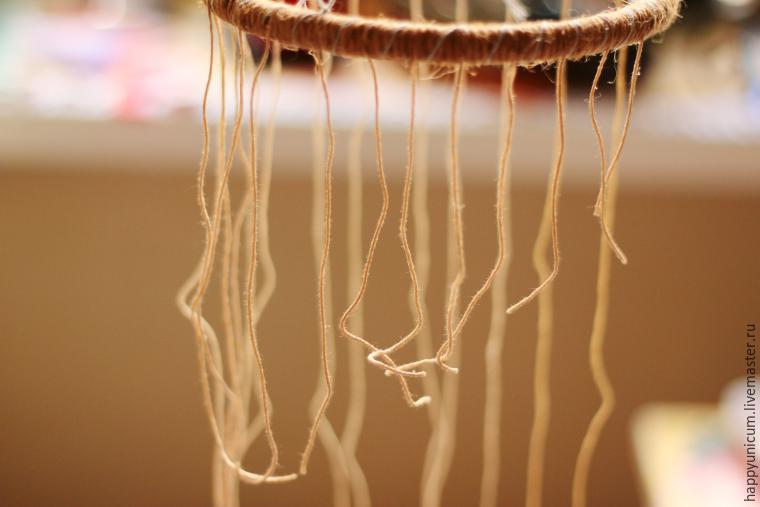 Next is the long and laborious part of the work: for each thread strung beads and beads in this order, as the heart desires and tastes! After the beads are strung and left a small tip of the thread we attach the first key:
Next is the long and laborious part of the work: for each thread strung beads and beads in this order, as the heart desires and tastes! After the beads are strung and left a small tip of the thread we attach the first key: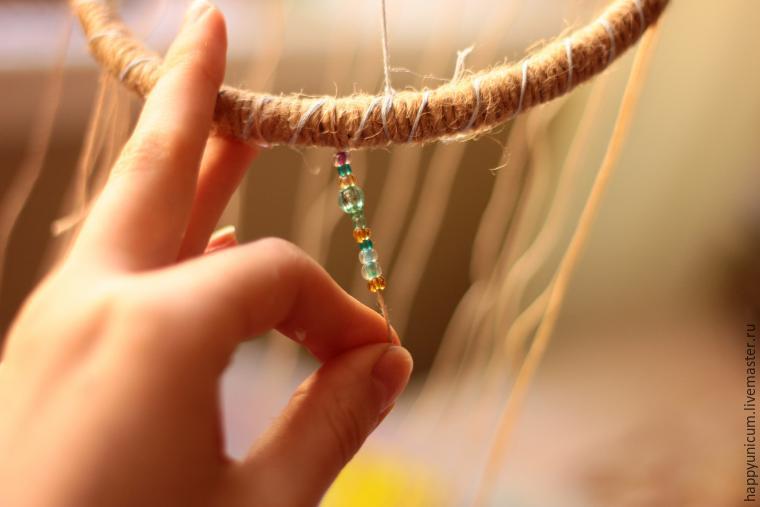
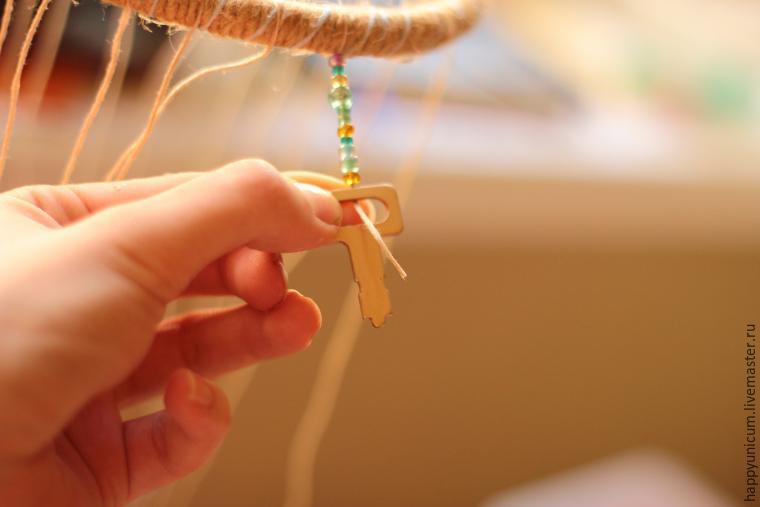 Key put on the glue, thread wrapped neatly around the tab key. And so we are working with each thread. It follows that each subsequent key hung lower, but touched the previous one.
Key put on the glue, thread wrapped neatly around the tab key. And so we are working with each thread. It follows that each subsequent key hung lower, but touched the previous one.
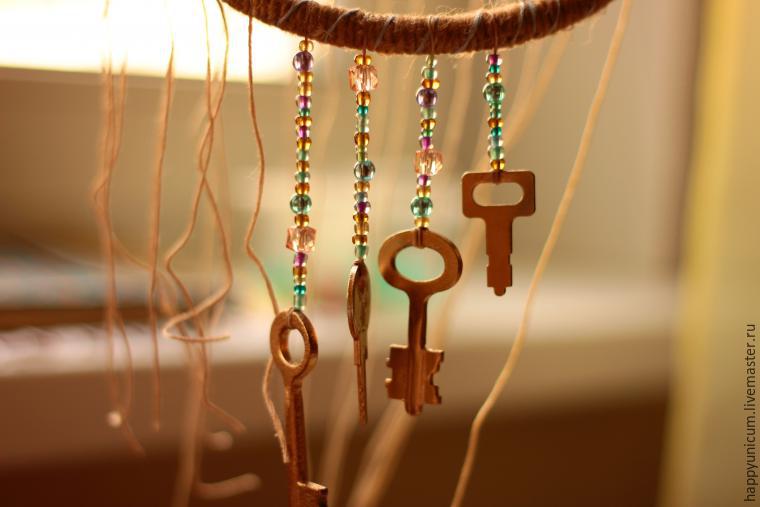



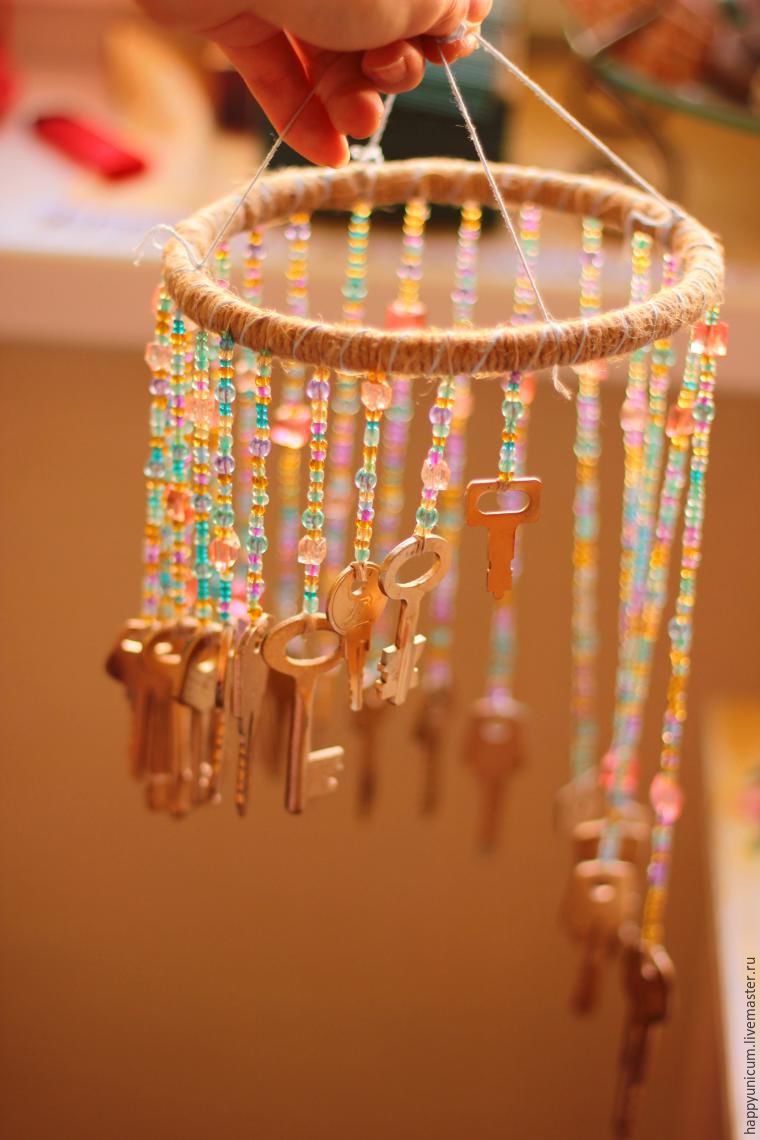
 After several hours of hard work, we are ready for the next step. Change the attachment to a neat and durable.
After several hours of hard work, we are ready for the next step. Change the attachment to a neat and durable. We decorate our foundation. To do this, use a wire of gold color and crystals – drops of blue. Do not forget about the beads.
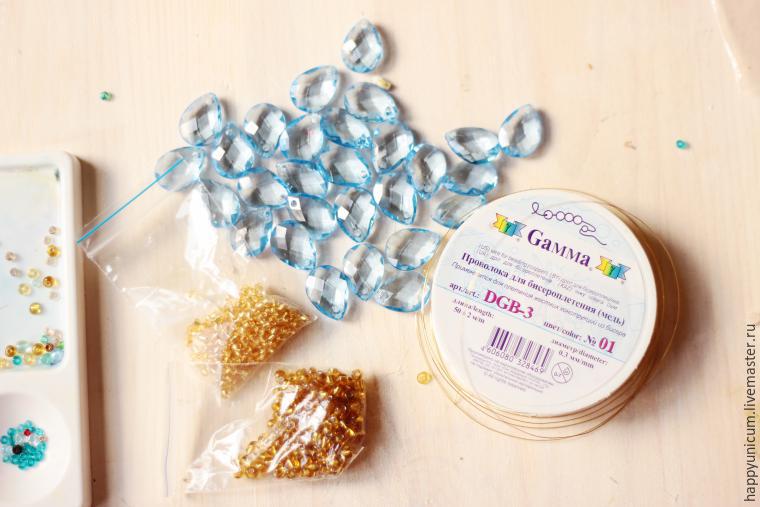 Wires are twisted into a spiral, arbitrarily adding beads and crystals. It turns out delicate wreath that our foundation.
Wires are twisted into a spiral, arbitrarily adding beads and crystals. It turns out delicate wreath that our foundation.

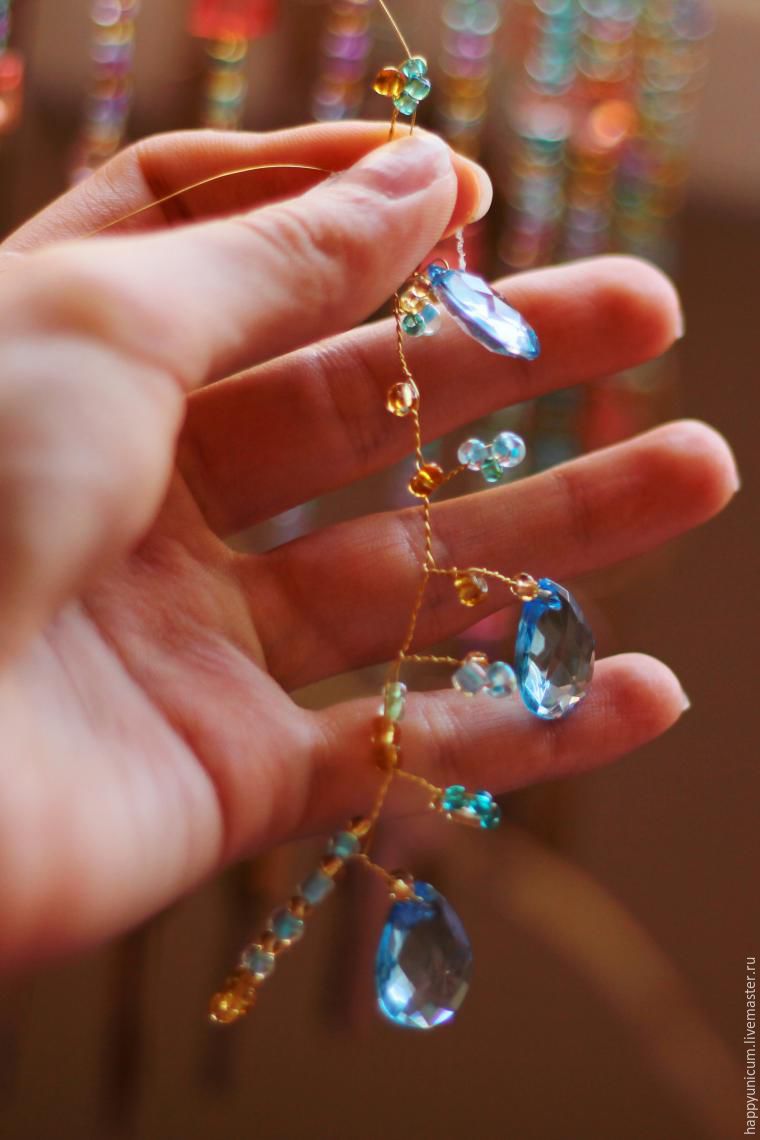
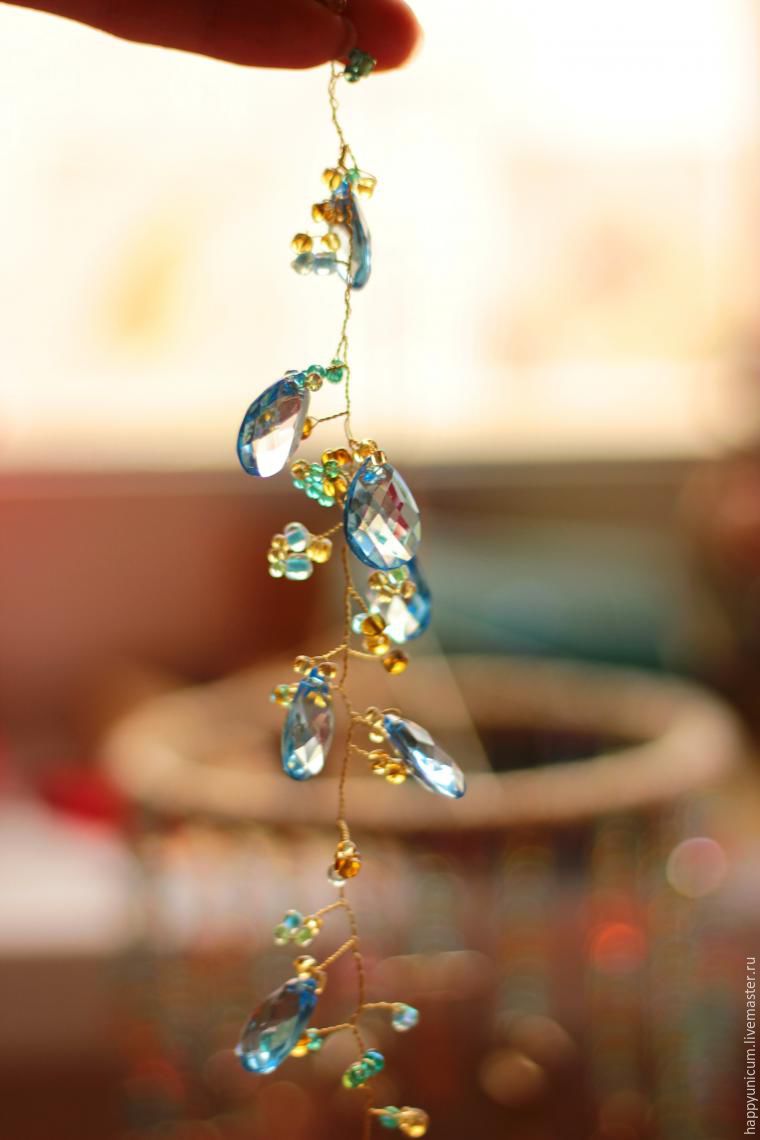
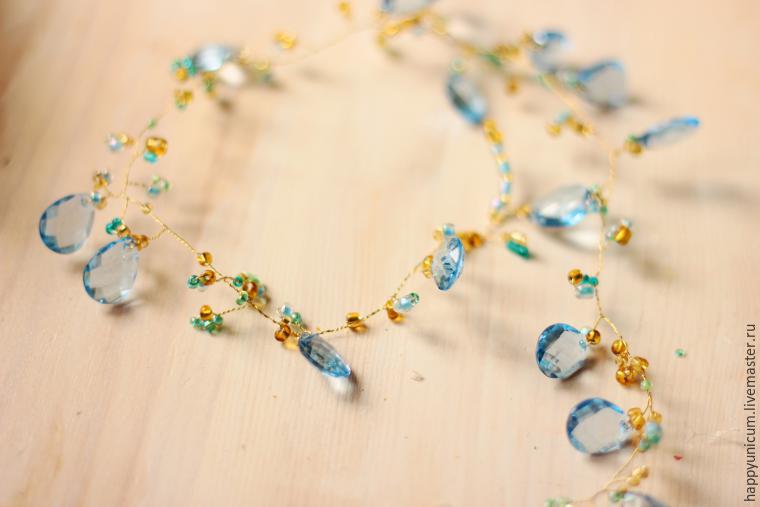
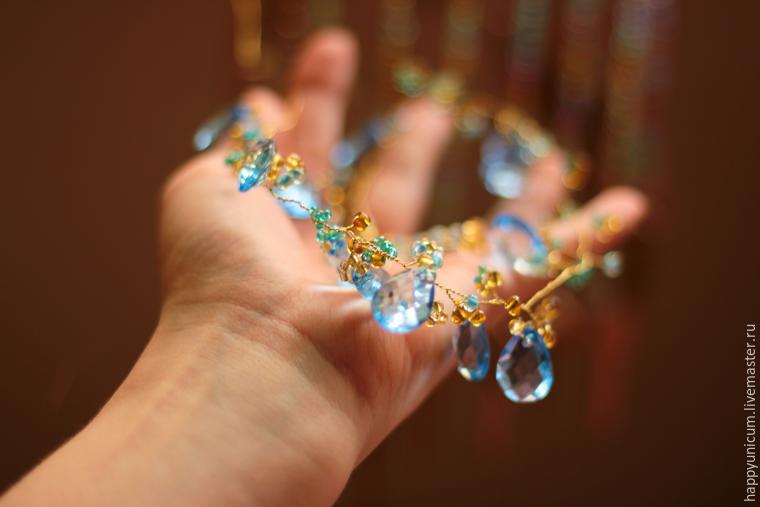
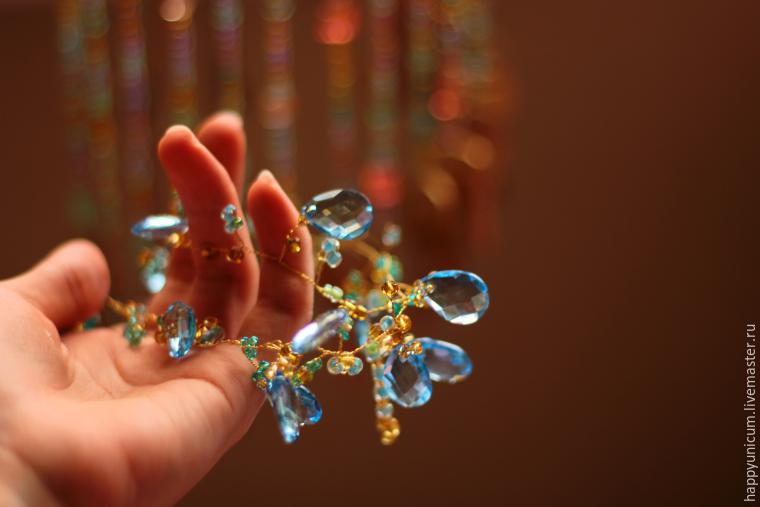 Entwine our foundation’s how beautiful it turns out:
Entwine our foundation’s how beautiful it turns out:
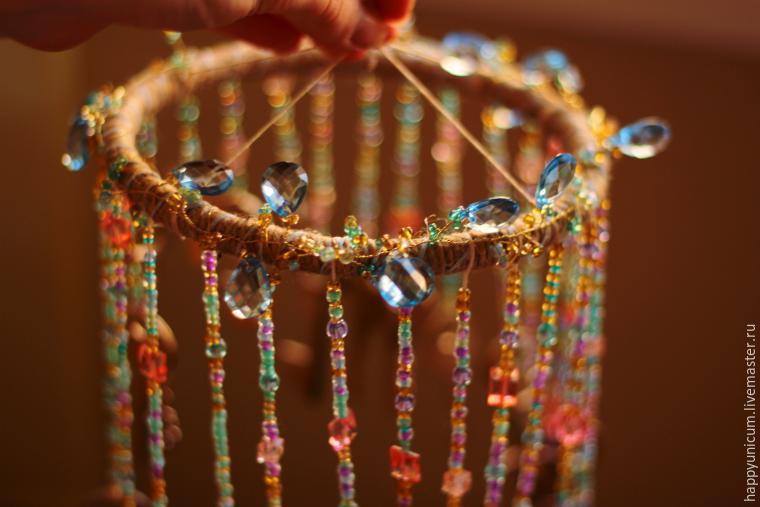
 I key tone seemed warm enough and I decided to cover them paint a rich golden color.
I key tone seemed warm enough and I decided to cover them paint a rich golden color.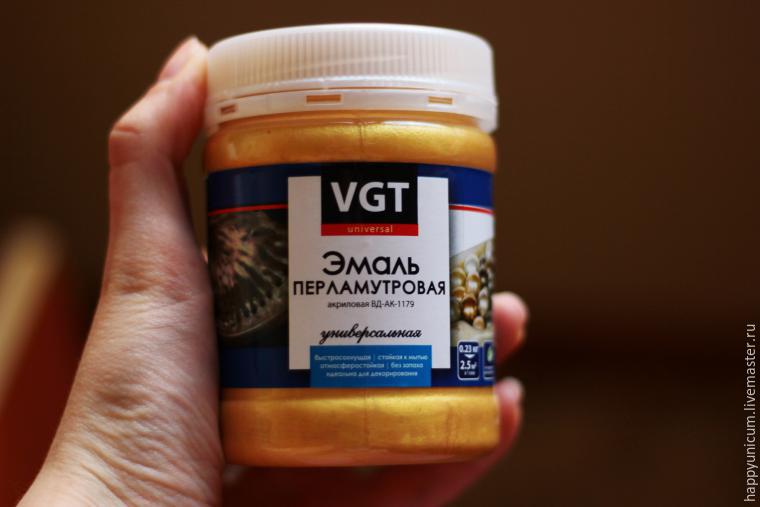


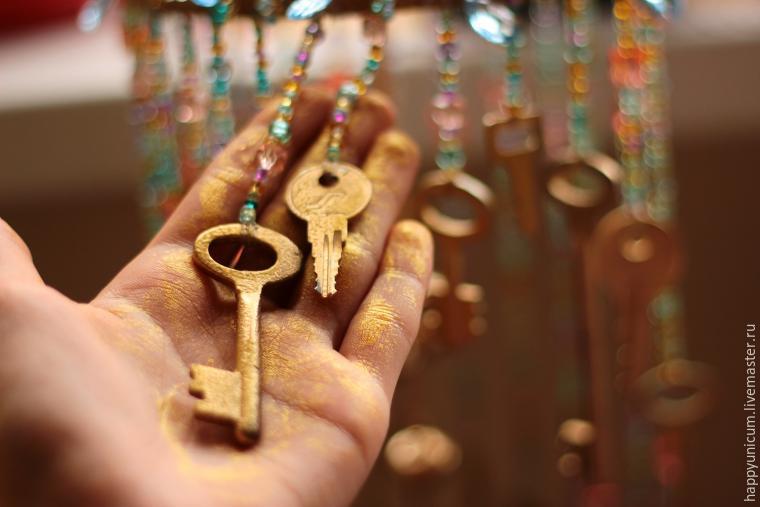 Gloves I never use, but you advise. Although the paint and so very easily washed away with warm water unnecessary chemical exposure to the skin you do not need. Now for the bells. Fasten each thread and tie them in a bundle, but so that each bell was on a different level.
Gloves I never use, but you advise. Although the paint and so very easily washed away with warm water unnecessary chemical exposure to the skin you do not need. Now for the bells. Fasten each thread and tie them in a bundle, but so that each bell was on a different level.
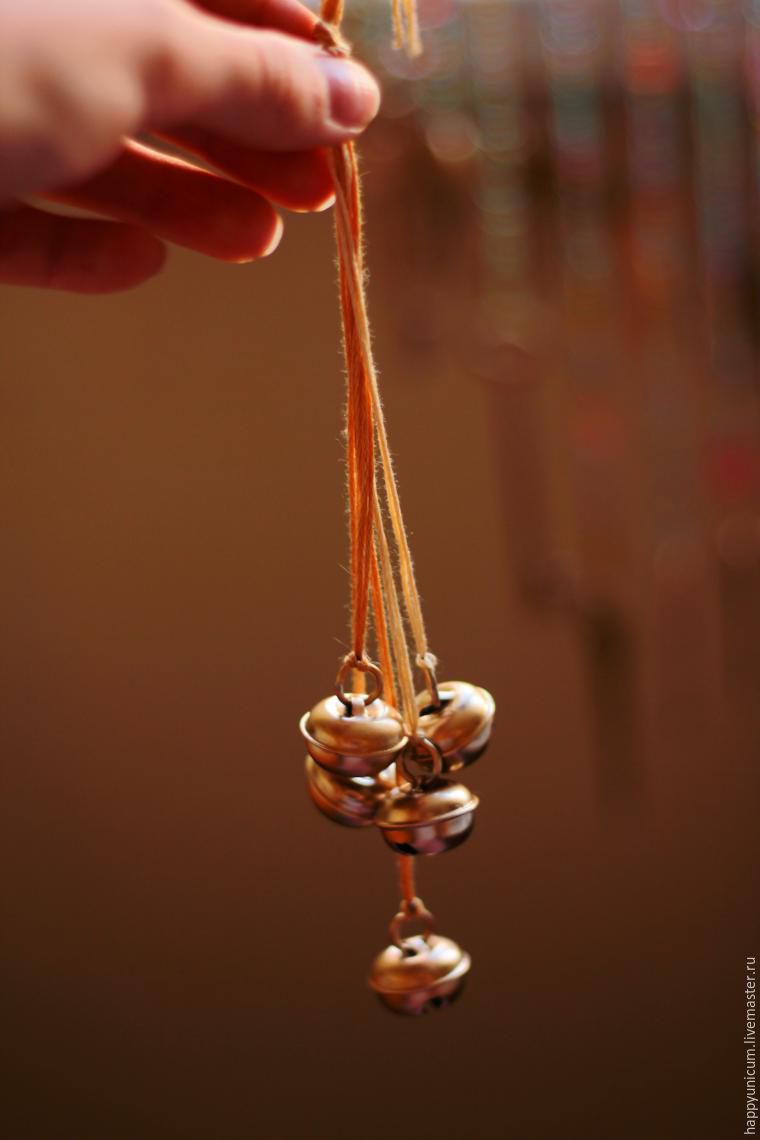
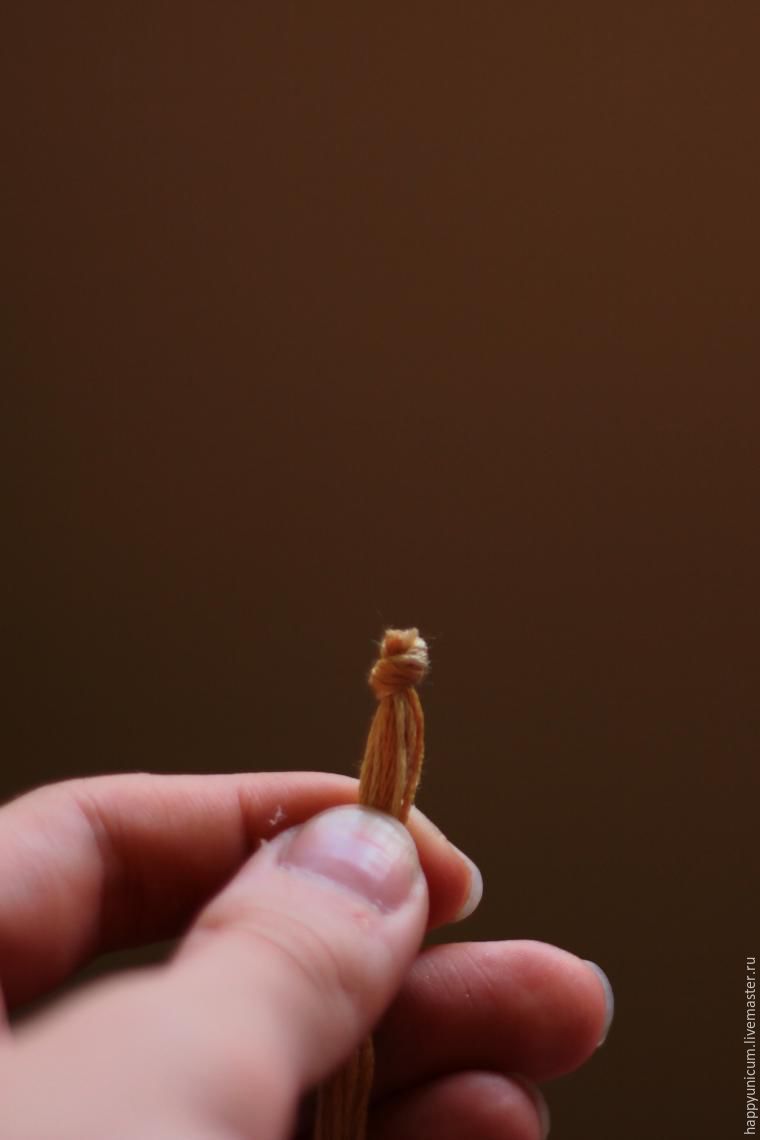
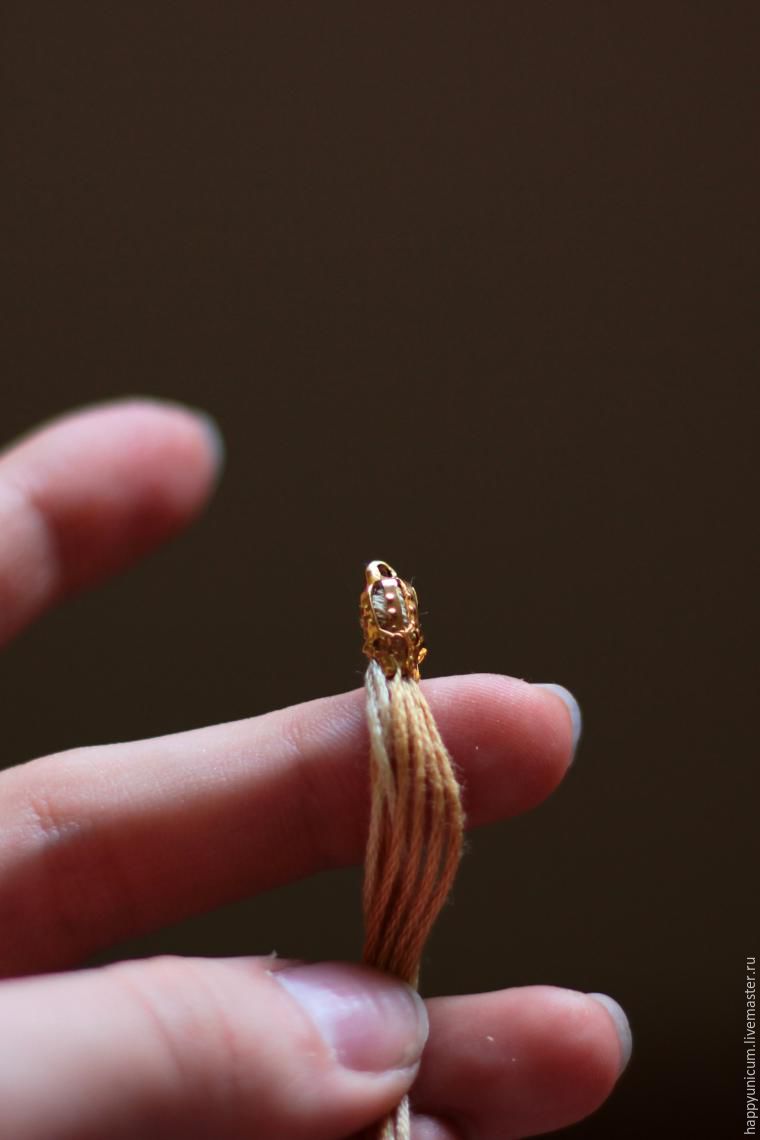 We hang the bells in the center of the composition, and enjoy 🙂
We hang the bells in the center of the composition, and enjoy 🙂

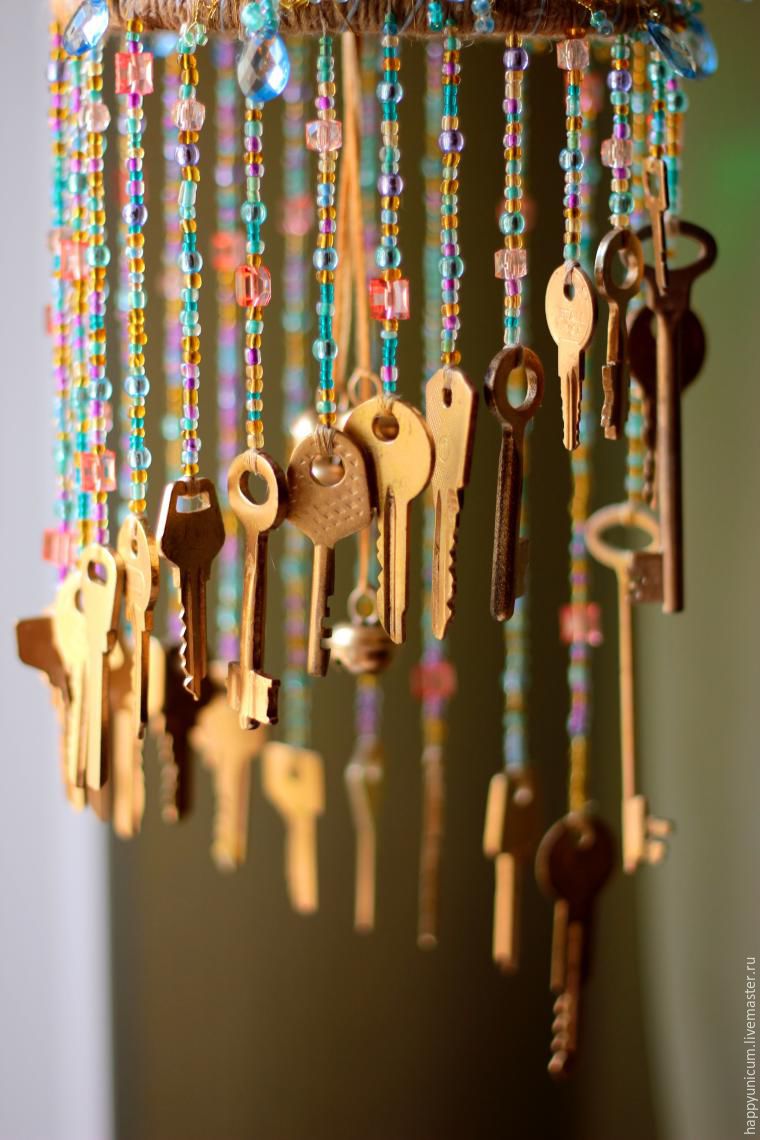 To all heard the wonderful sound.
To all heard the wonderful sound.
How to make oyule lamp
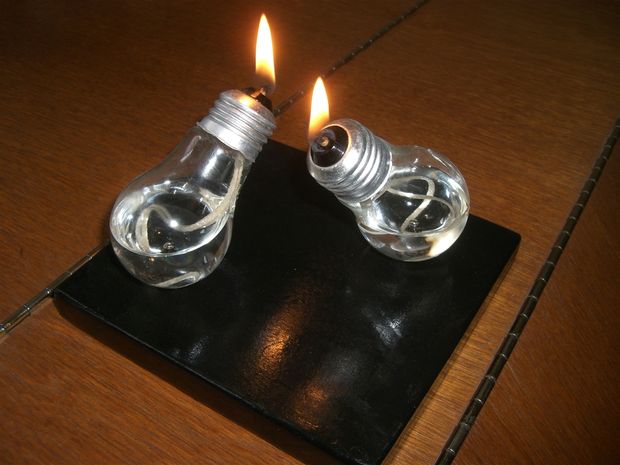
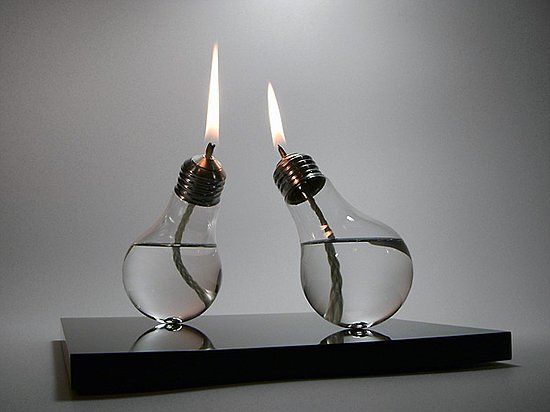
I agree that it does look nice, but the materials only cost about $10:
Paraffin oil
A wick
Two burned out light bulbs
A piece of wood
Black gloss paint
Twelve neodymium magnets
(8 small cylindrical magnets, two large cylindrical magnets, two spherical magnets)
EpoxyMy version of this lamp is slightly cheaper than the original though, the differences are listed on the pictures.
Step 1: Hollowing The Bulbs
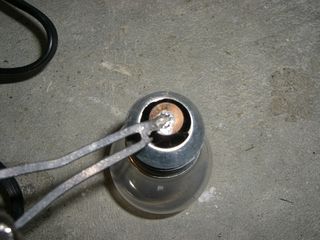
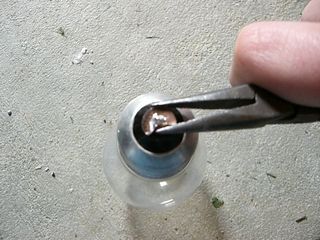

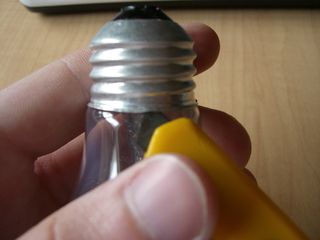

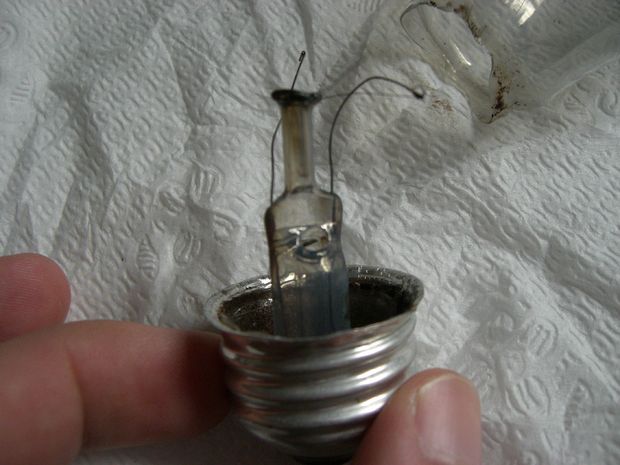
(the small piece of metal is one of the electrical contacts, the other is the part that’s threaded like a screw)
With an X-Acto knife or box cutter carefully pry the base away from the glass, it is attached by some sort of adhesive, but nothing else. Some are attached better than others, and are more difficult to separate.
Next, using a screwdriver carefully break the glass holding the filament.
Clean up the sharp edges as best you can.
Step 2: Wicks
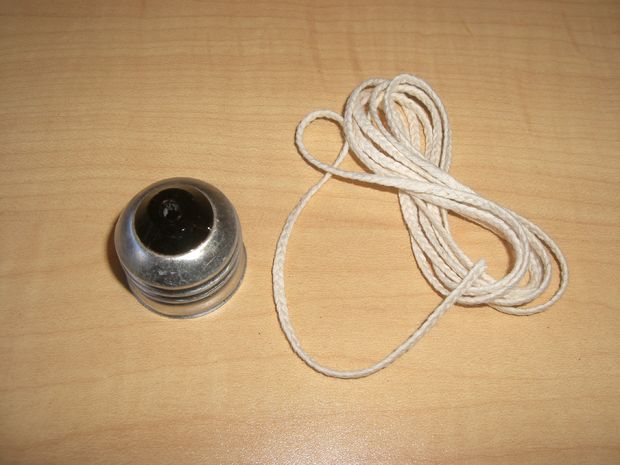
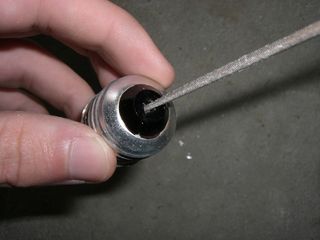
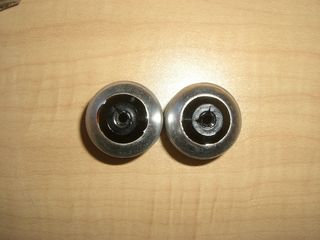
(Attempting to drill it would most likely end with a broken base)
Step 3: Reattaching The Base
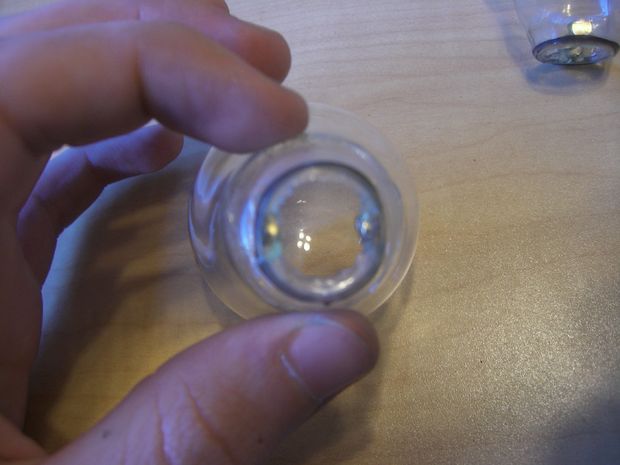

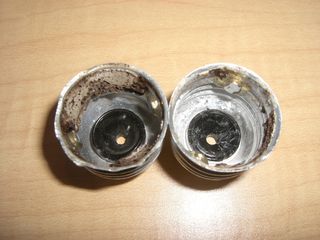

I attached a 1/16in thick magnet with a diameter of 3/16in to each side of the base using epoxy. On the inside of the bulb, where the indentations are, I did the same.
*I tried to do this with super glue, but it melted.
Step 4: Creating the Base for the Lamp
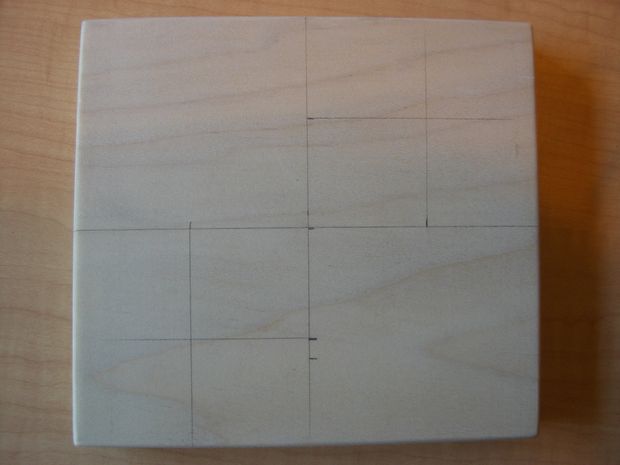
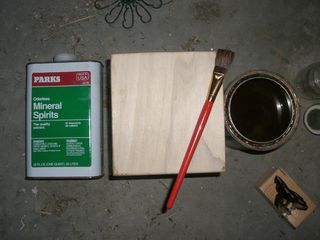
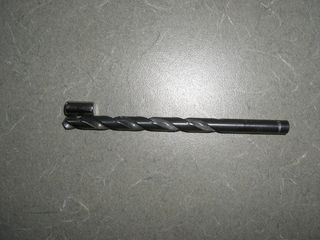

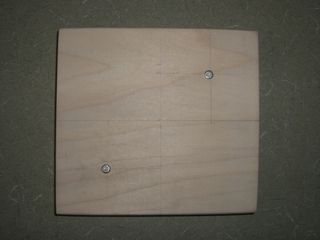

(its easier to look at the picture than figure out the explanation)
Because a drill creates a cylindrical hole, cylindrical magnets look the best, and make sure the holes are the right depth, because the magnets are very difficult to remove.
Now sand the surfaces, edges, and corners to smooth out and round the piece of wood.
Apply a layer of sanding sealer, allow it to dry, and sand again with a very fine grain of sand paper.
Paint with black gloss paint (or any other color) and allow to dry.
note: To clean the paintbrush you used for the sanding sealer, use mineral spirits (turpentine) not water.
Step 5: Finish It!
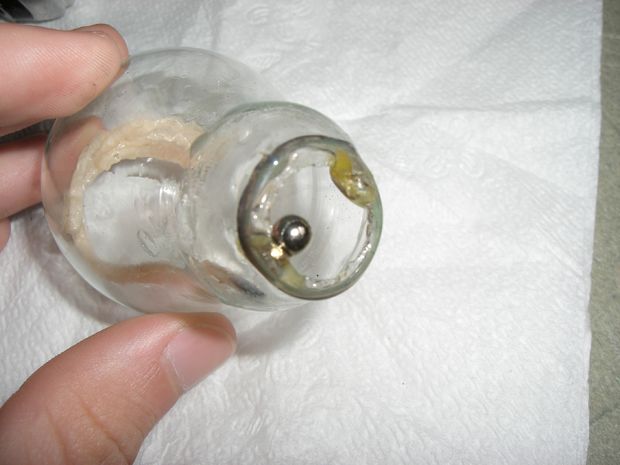

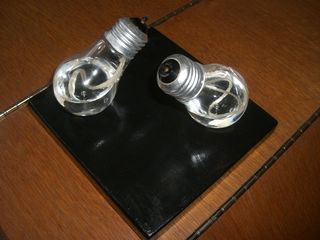



All that’s left to do is:
Place the spherical magnet in the bulb
Fill it with oil
Because of the magnets that hold the base of the bulb on, getting the spherical magnet in can be difficult. To do so easily place a straw in the bulb, put the magnet in it, and push with a skewer.
Use a funnel to fill your bulbs, place the lid (base of the bulb) on, and attach them to the wooden base.
Do not pick up the lamp while the candles are lit, even when they aren’t be careful because the light bulbs rotate very freely.
How to make swan of plastic bottle
Such a beautiful swan can come from usual, we do not need a plastic bottle that there exists among many. Look at this process works. Nothing complicated, but what happens magnificent swan.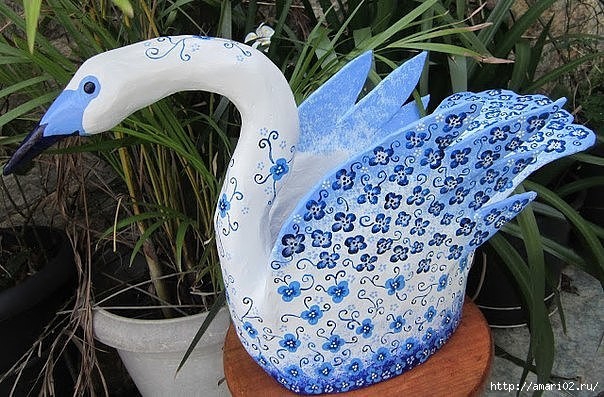

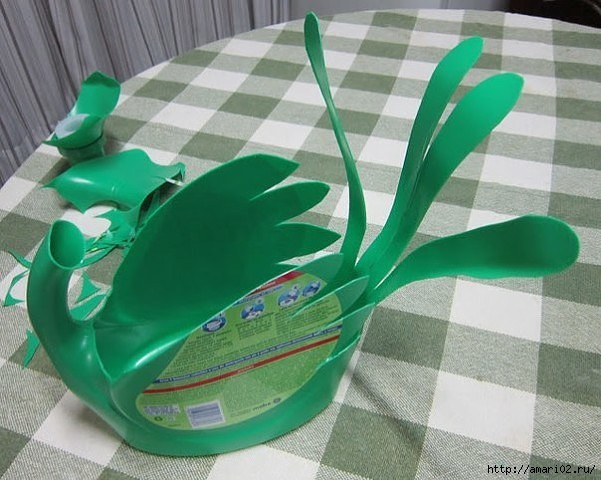

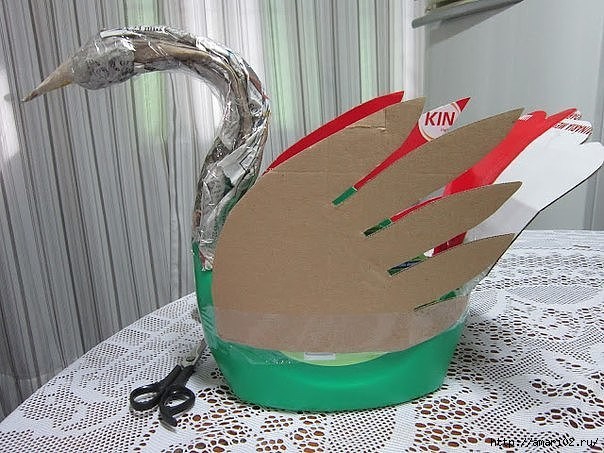



How to make cheap frame
Good day to all. Today I want to show you how I make the scope of the paper tubes to their panels. Who is interested in a nice view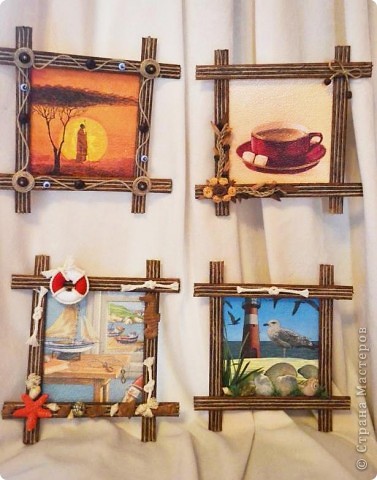
We need:
- Paper A 4
- PVA glue
- Thermo gun
- twine natural
- clothespins
- scissors
- spoke
- varnish (pictured there)
- stain (in the photo is not present)
 The sheet cut into two parts and twist the tube at an angle of 45 degrees.
The sheet cut into two parts and twist the tube at an angle of 45 degrees. Tip with maximum precision sizing glue gun. If this is not done carefully when you’re painting the stained tubes, it does not lie flat.
Tip with maximum precision sizing glue gun. If this is not done carefully when you’re painting the stained tubes, it does not lie flat.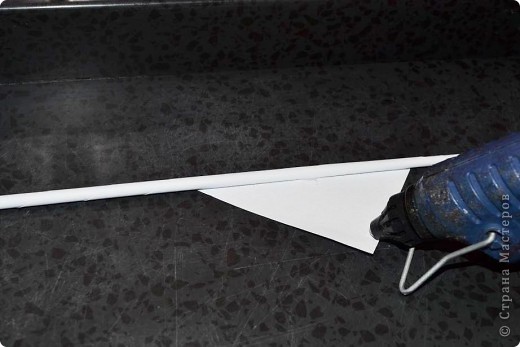 Here’s what happened
Here’s what happened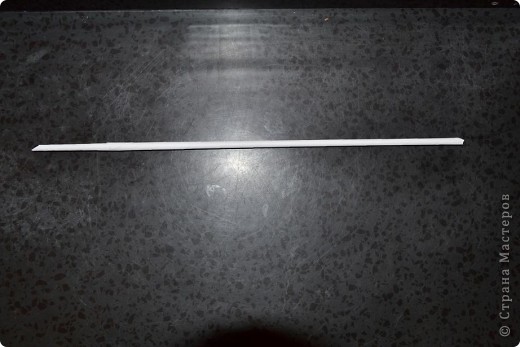 This is one side of the frame. There should be 4.
This is one side of the frame. There should be 4. When you add duct alternate thick and thin tip. To obtain a clean strip width.
When you add duct alternate thick and thin tip. To obtain a clean strip width.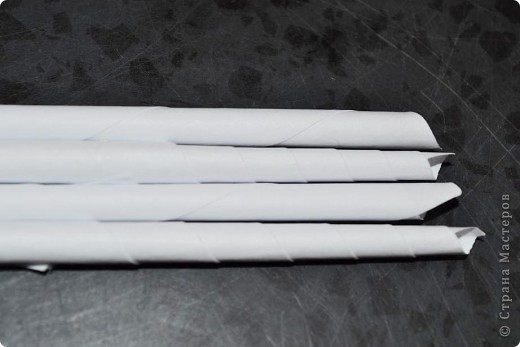 Overturn the tube glue tip top. Cut small strips of paper. And we stick to our paper tubes.
Overturn the tube glue tip top. Cut small strips of paper. And we stick to our paper tubes.
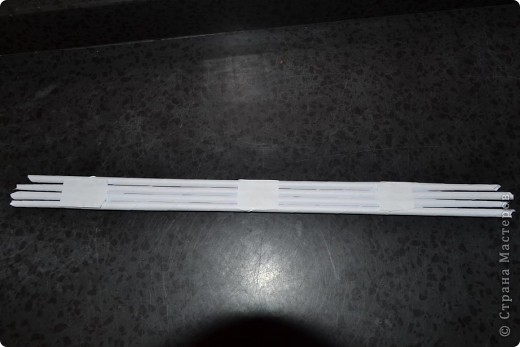 Fasten duct clothespins most densely pressing them to each other, until completely dry.
Fasten duct clothespins most densely pressing them to each other, until completely dry.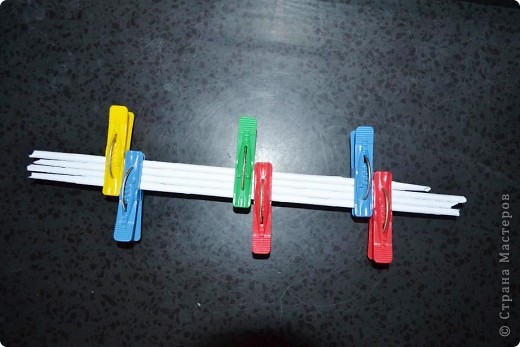 Done
Done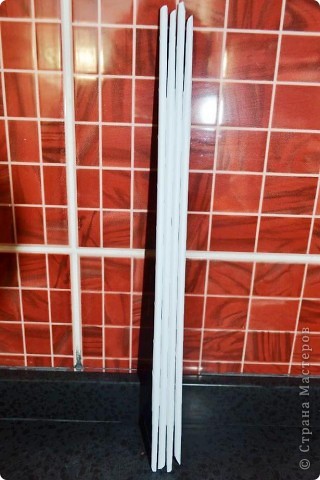 Doing these 4 and cover their stain.
Doing these 4 and cover their stain.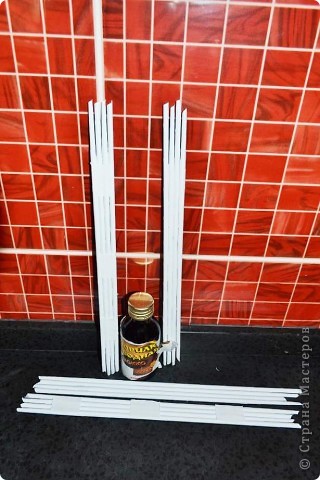 dry them
dry them Then place a layer of varnish 2 3 sushi
Then place a layer of varnish 2 3 sushi Dried strips of the thermal glue gun to our panel.
Dried strips of the thermal glue gun to our panel. Like this
Like this With a sharp knife or scissors, cut off the ends.
With a sharp knife or scissors, cut off the ends.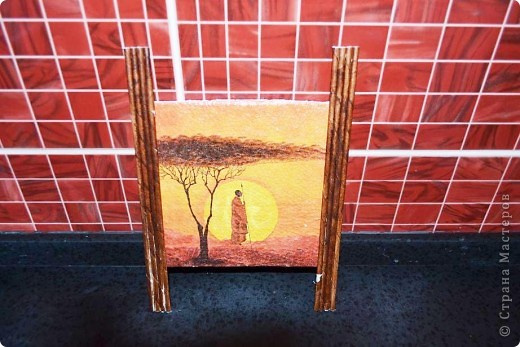 Between the gun, tubes Apply a thin strip of glue and glue quickly our splits. The tips are clipped.
Between the gun, tubes Apply a thin strip of glue and glue quickly our splits. The tips are clipped.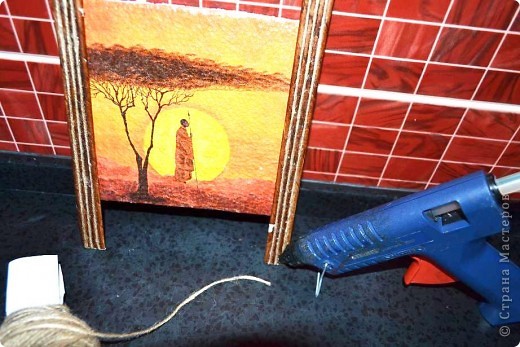 Glue gun our top and bottom of the frame. Cropped ends.
Glue gun our top and bottom of the frame. Cropped ends.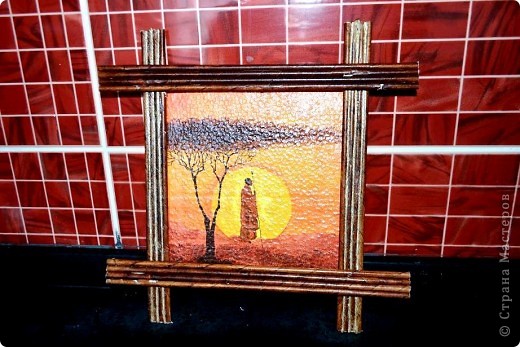 Just glue the twine it will close all the technical mistakes on our frame.
Just glue the twine it will close all the technical mistakes on our frame. Done. You can take a decorative cord and paint our example gouache tubes. I have wood. Color stain “Mocha”
Done. You can take a decorative cord and paint our example gouache tubes. I have wood. Color stain “Mocha”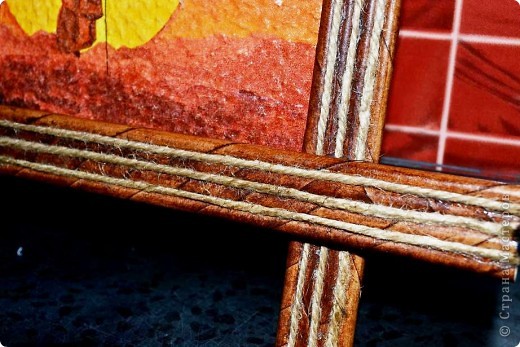
 The tips of the painted stained, and some just scorched by fire (turned more brutal)
The tips of the painted stained, and some just scorched by fire (turned more brutal) And with decor
And with decor